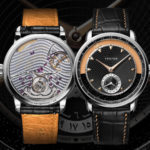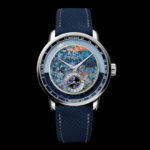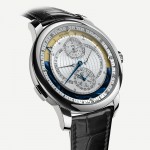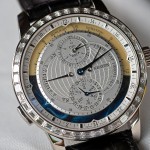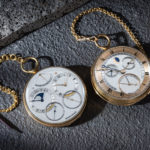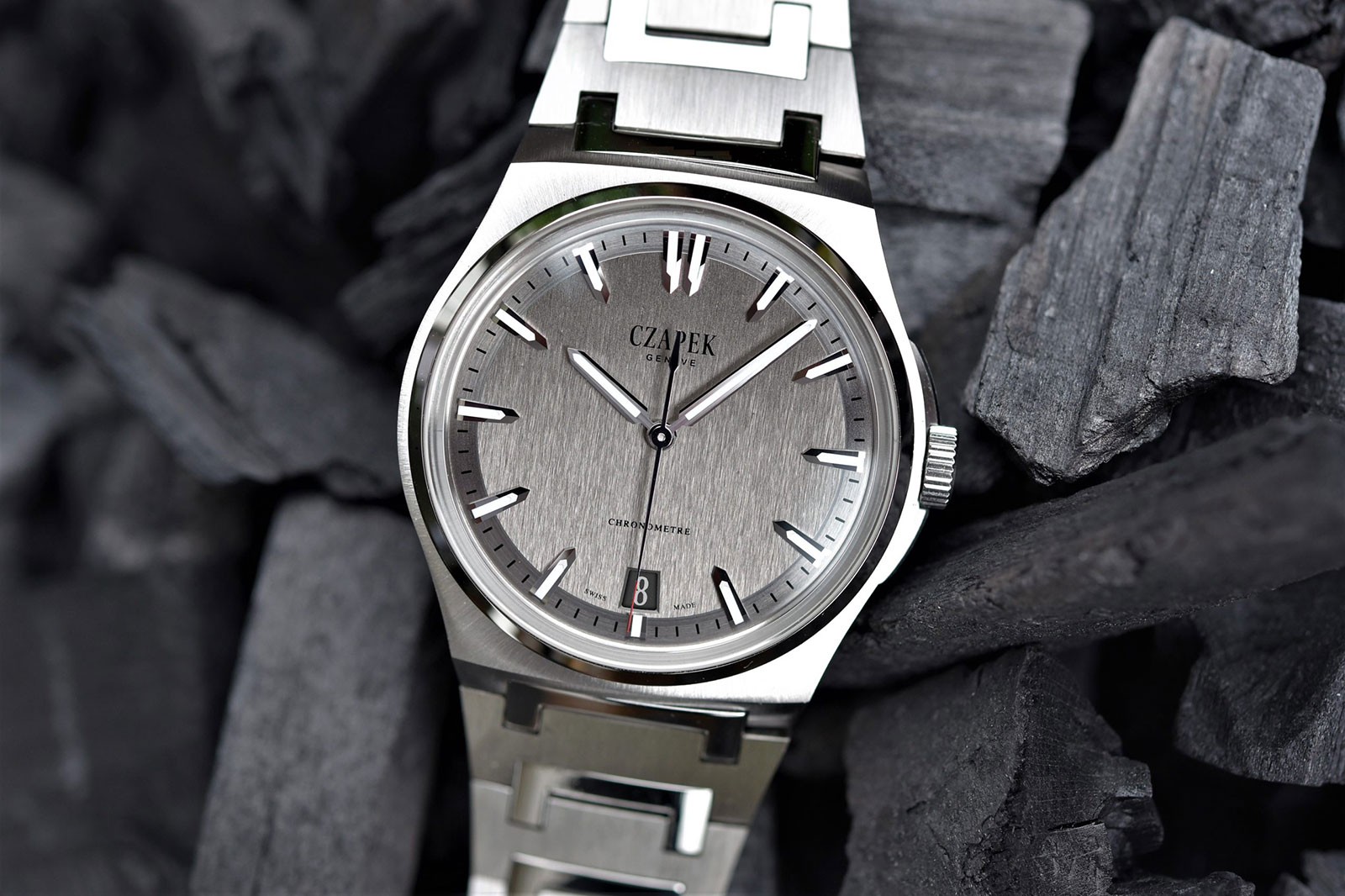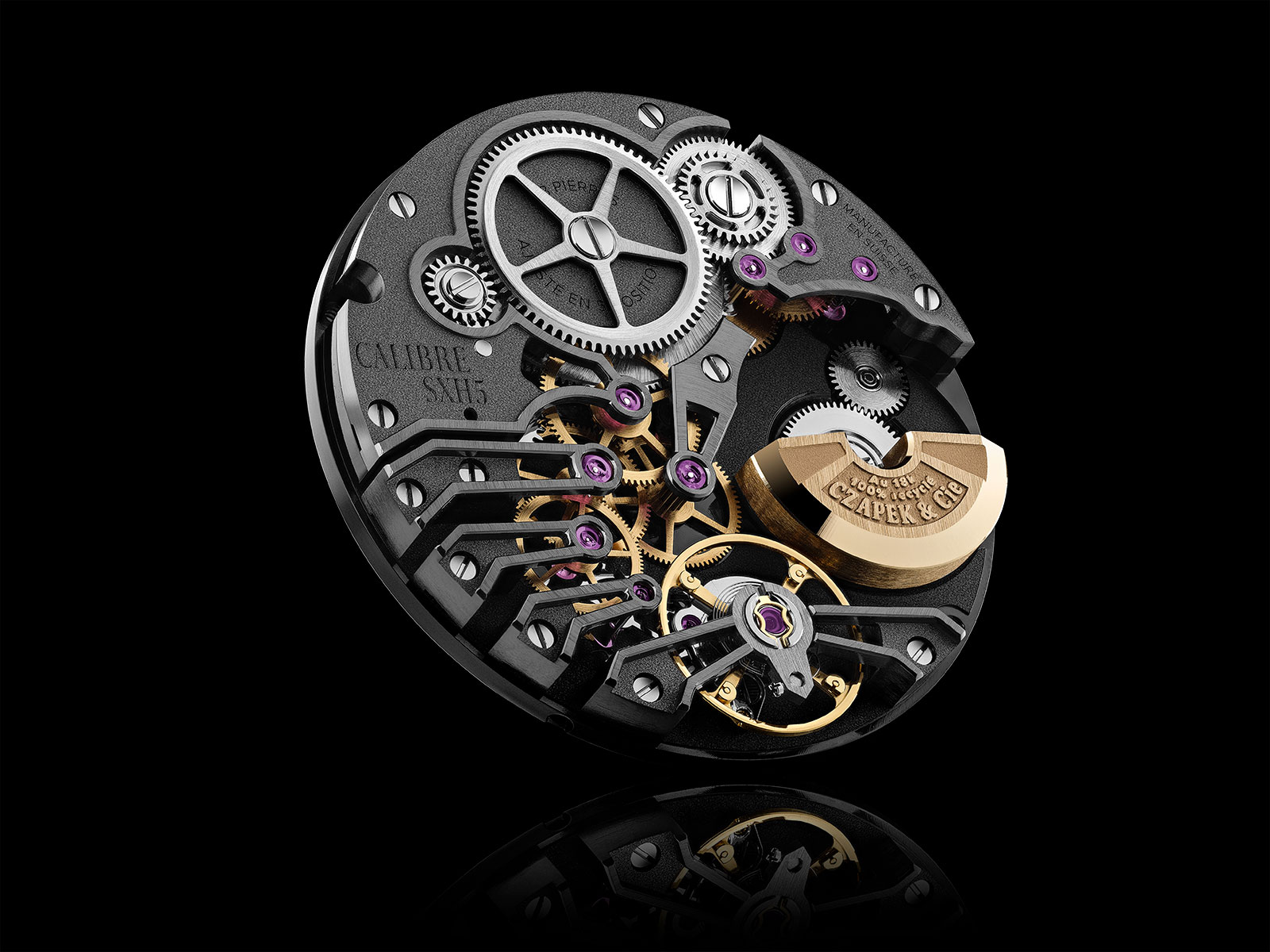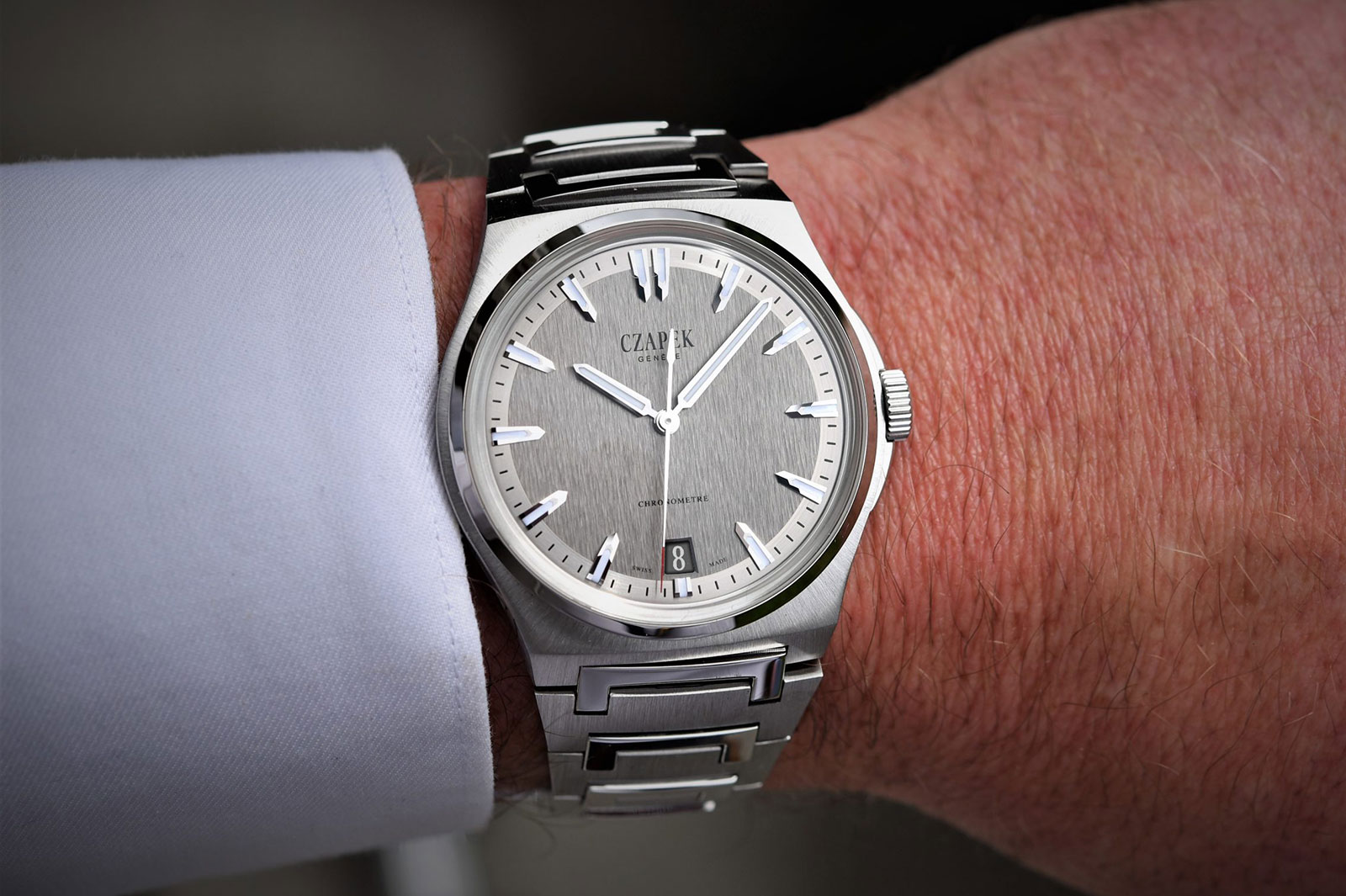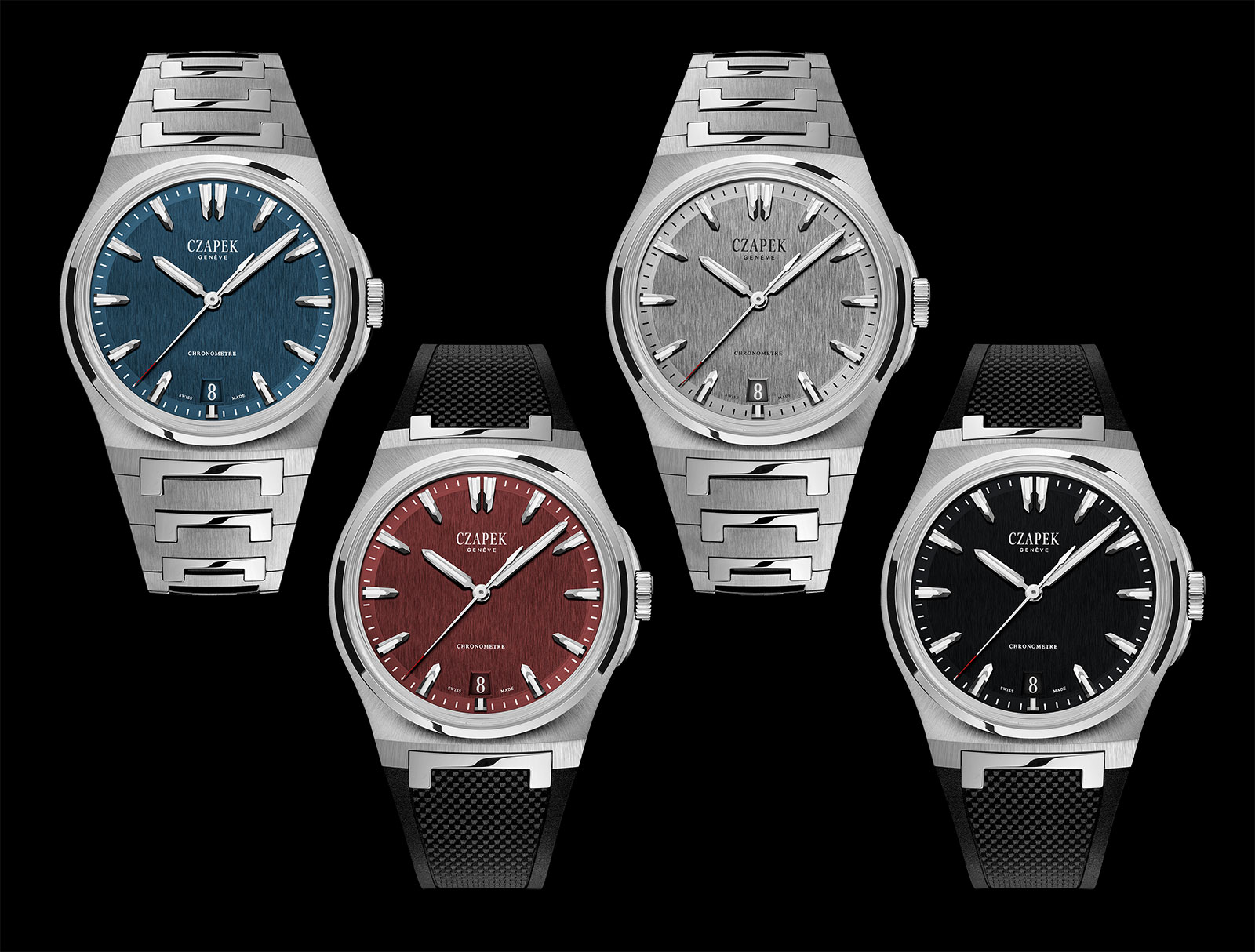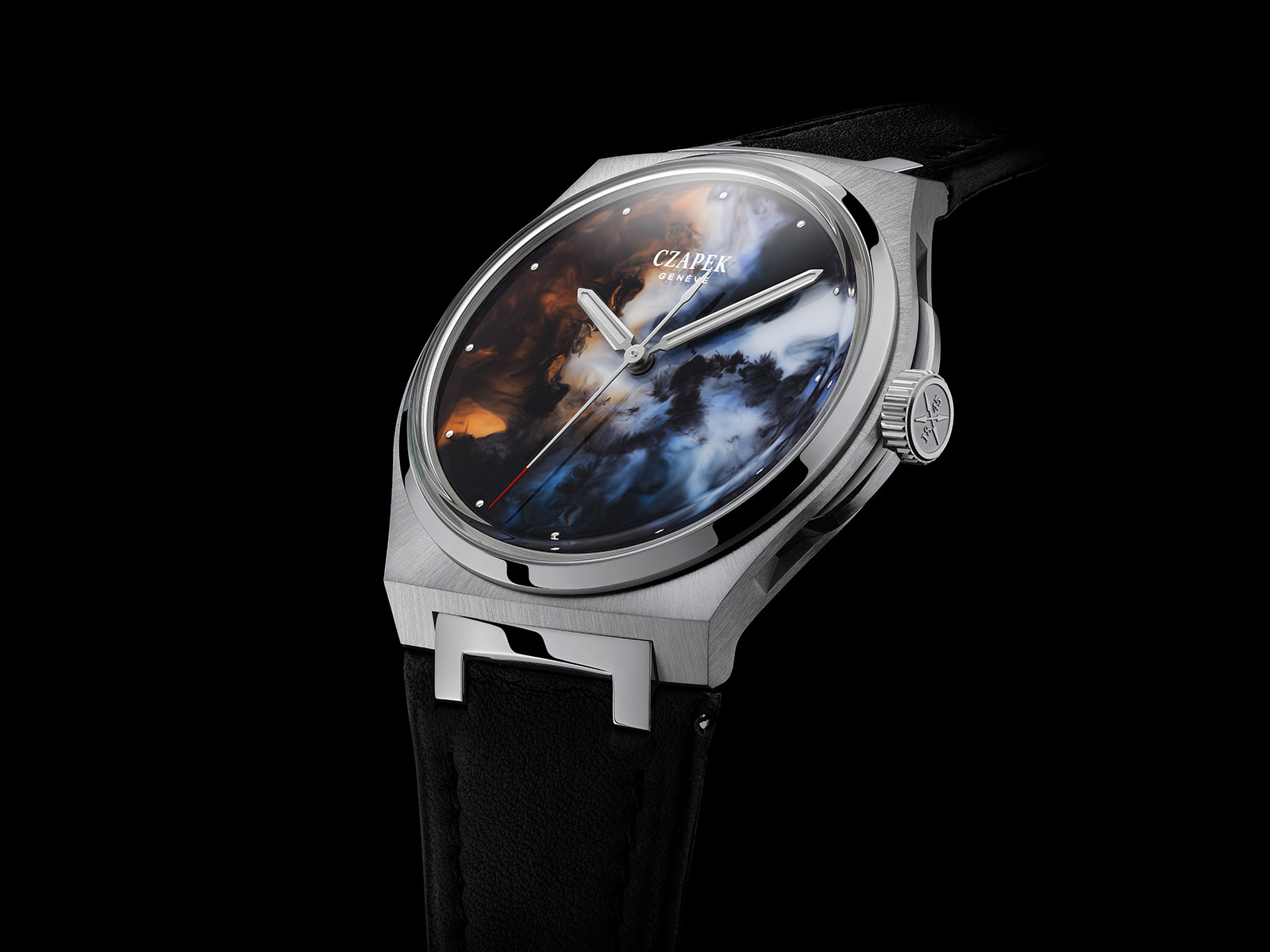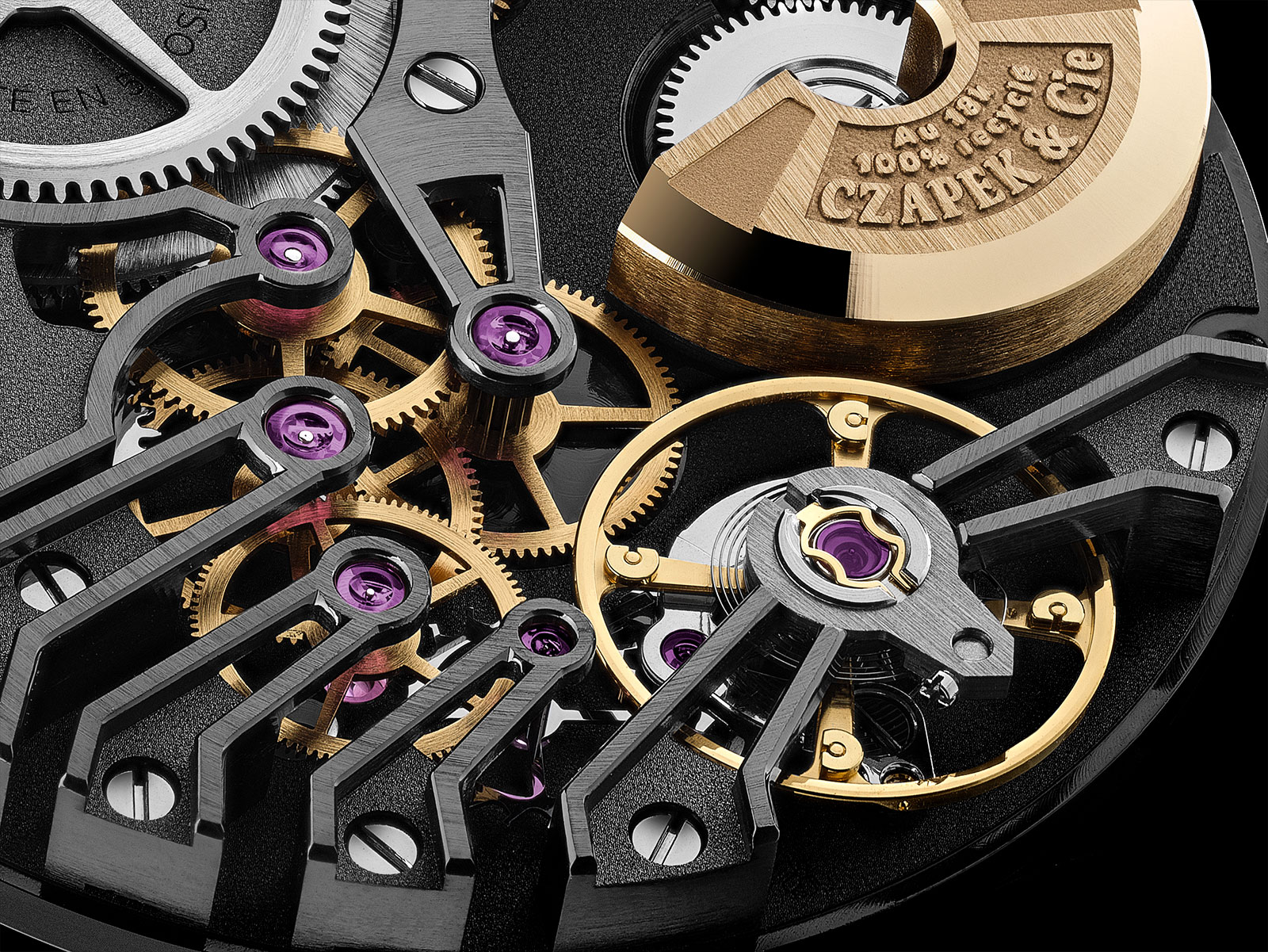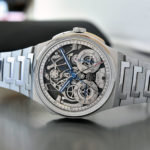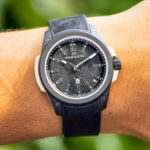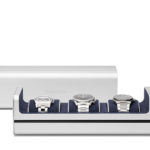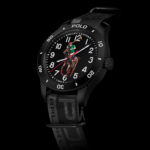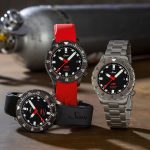In-Depth: Krayon Anywhere
Sunrise and sunset anywhere.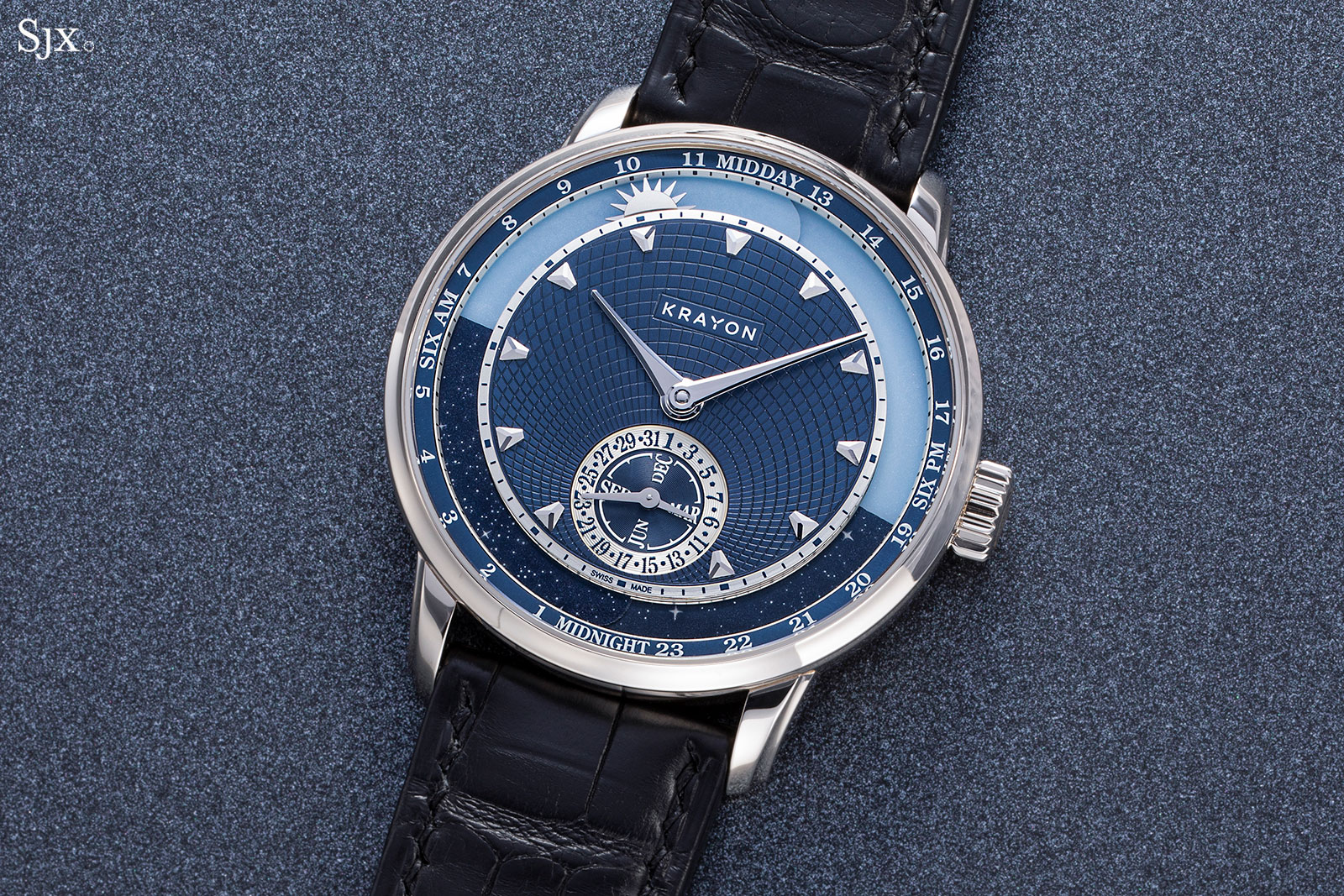
Krayon made its debut in 2017 with the Everywhere, an incredibly complex wristwatch that was, in essence, a mechanical calculator for sunrise and sunset. Founded by movement constructor Rémi Maillat in 2013, Krayon has debuted the follow up to the Everywhere, the simpler, sleeker – and a lot more affordable – Anywhere.
Like its bigger brother, the Anywhere displays the time of sunrise and sunset. But while the Everywhere allowed the wearer to input his location and time zone for the watch to show local sunrise and sunset times everywhere, the Anywhere displays sunrise and sunset times for a single, fixed location, albeit one that can be quite easily changed by a watchmaker. Despite while the complication has been streamlined, the movement has been upgraded in terms of finishing, which is now exceptional.
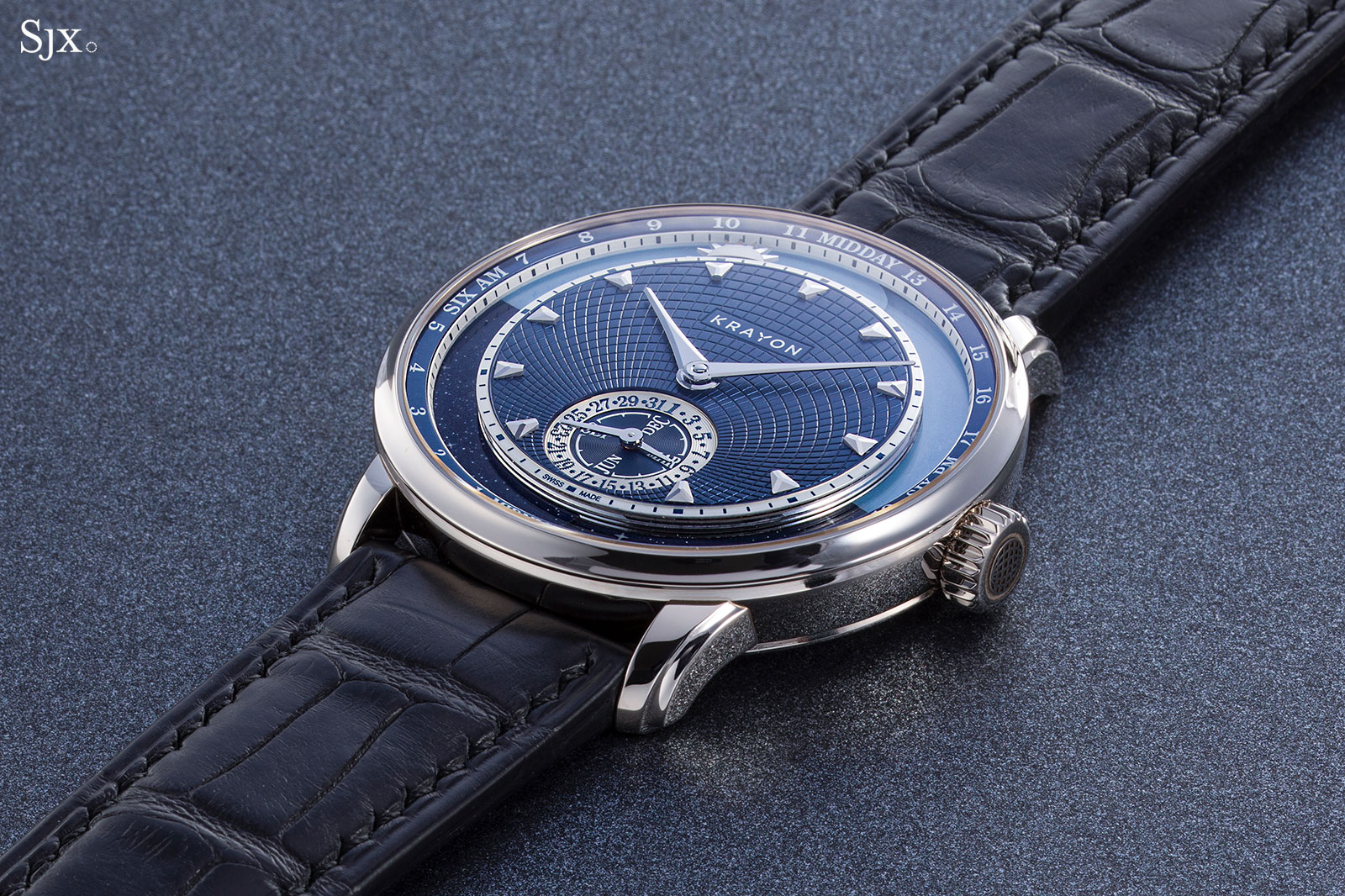
The Anywhere in white gold
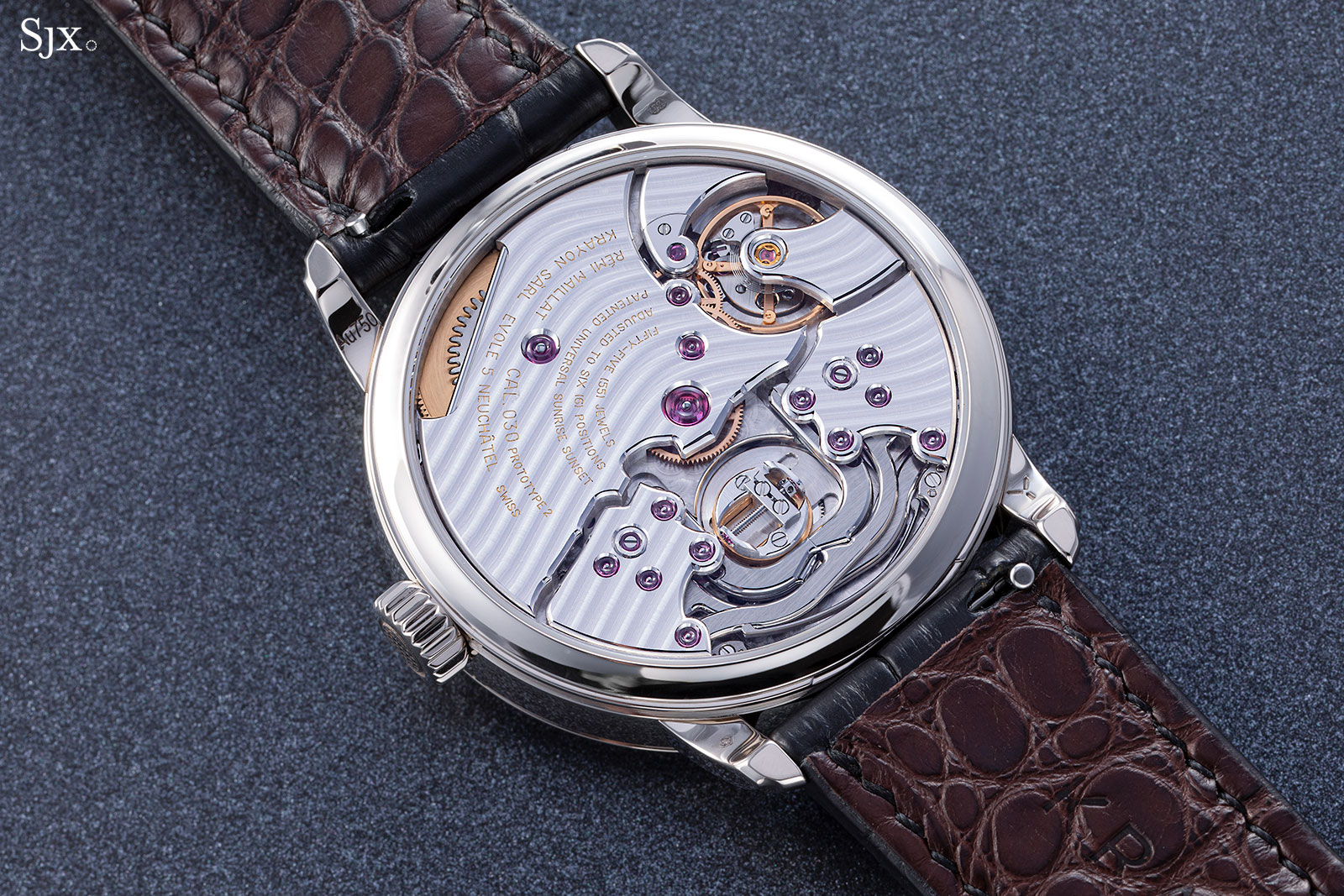
Initial thoughts
The Anywhere is surprising in person. Given the complexity of the movement, you’d expect a large watch with a fussy display. But the Anywhere is modestly sized – the thinness of the case stands out – giving it an elegant profile on the wrist.
At the same time, the dial layout is simple and intuitive, making it easy to understand. And it is also easy to operate, with the calendar and time both set via the crown. And the calendar, in turn, controls the sunrise and sunset function, so the interface is straightforward.
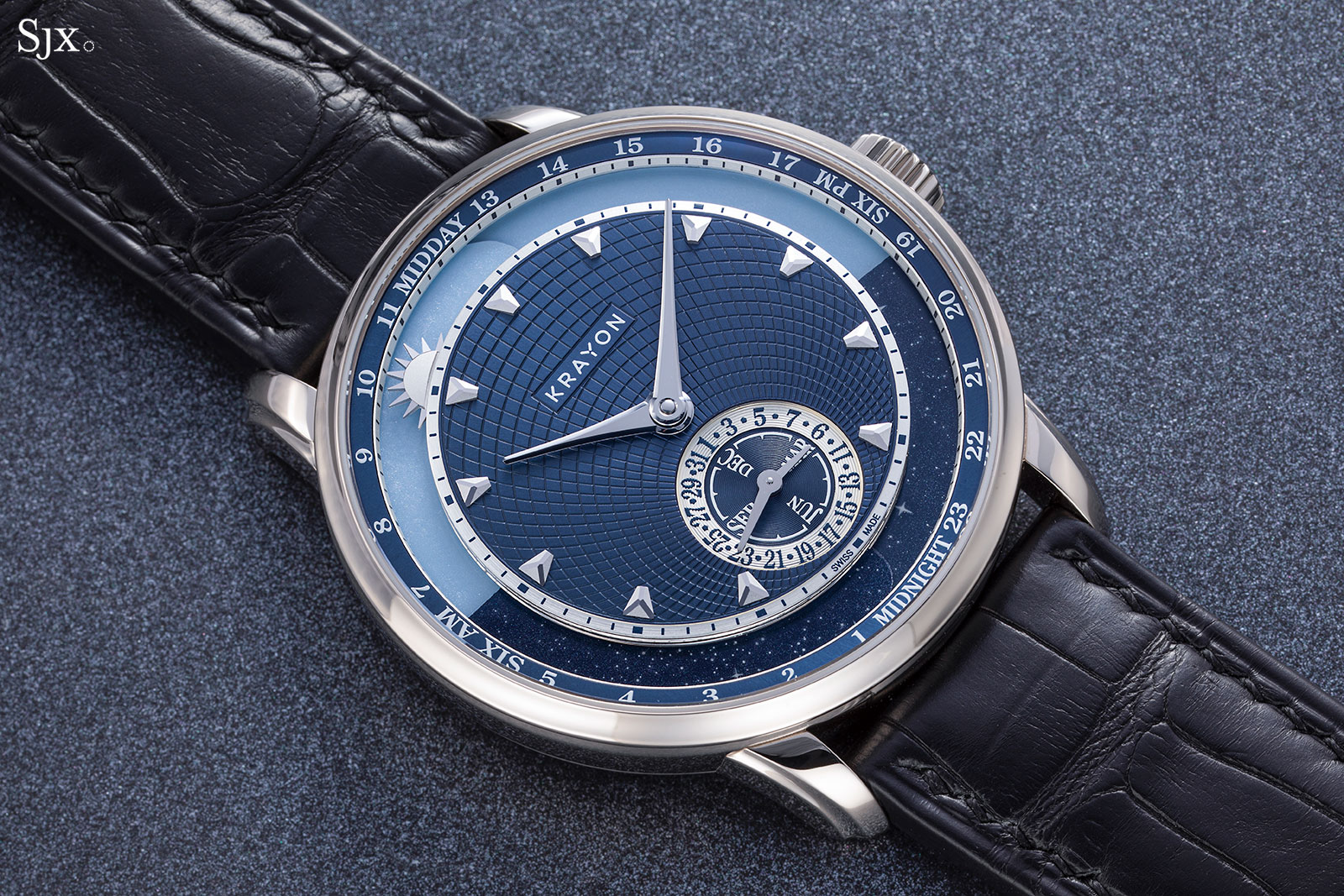
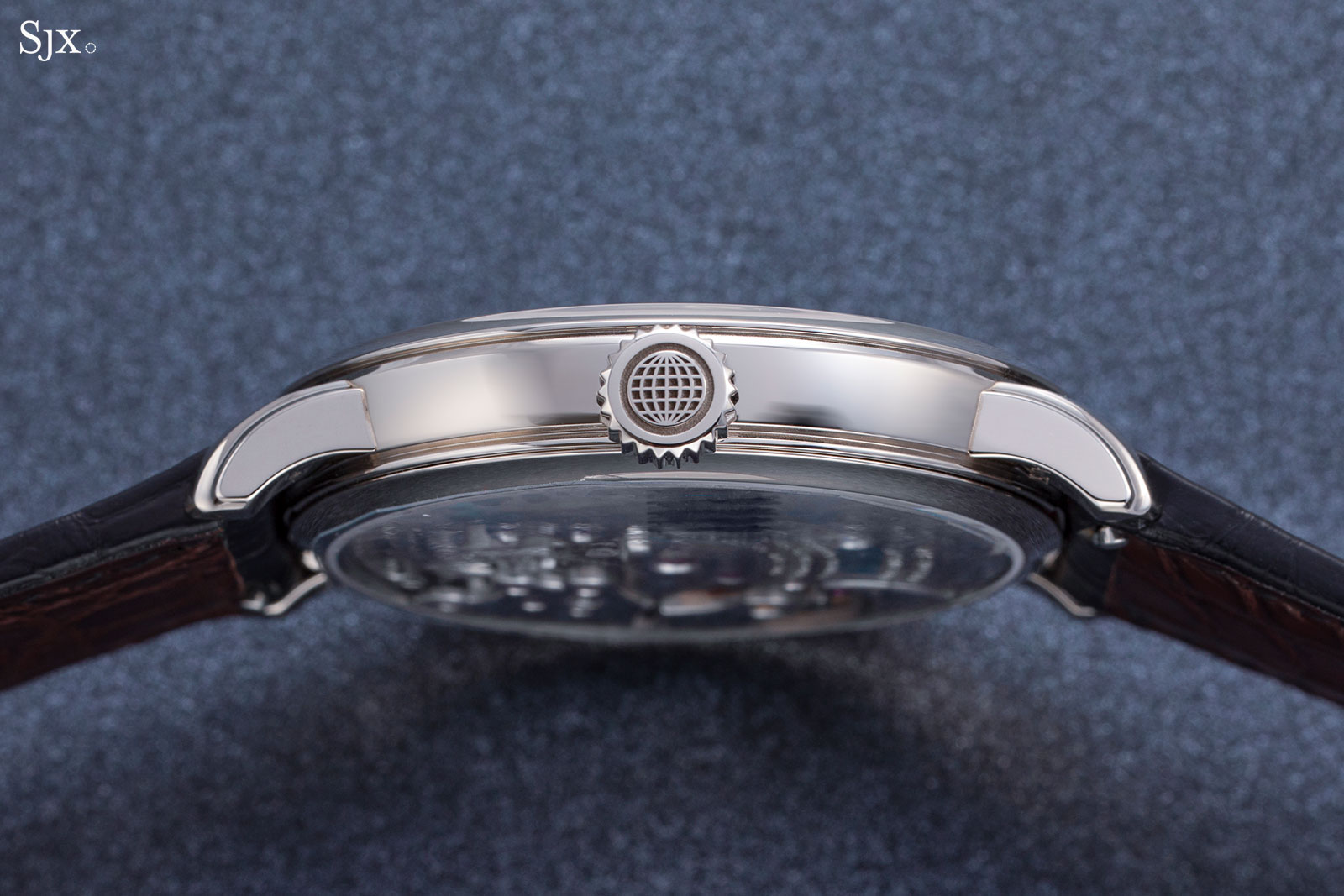
Turn it over and the movement is also surprising. While the movement in the Everywhere was a mechanical masterpiece, its decoration was fine but not special.
The Anywhere, on the other hand, has been decorated to a far-higher level, and the superior finish is obvious even at a distance. Up close, the movement stands up to scrutiny, even though the watch pictured is a prototype. That said, the movement design is peculiar; the bridges are large and oddly, though they have been purposefully designed that way (more on that later).
Although the Anywhere only shows sunrise and sunset times for a single location, it’s an reasonable and practical compromise. Not only does it do away with the excessively complex setting process required for the Everywhere, the compromise also means the Anywhere is vastly more affordable.
At a bit under US$100,000 for the steel version, the Anywhere is a sixth of what the Everywhere cost. While hardly a bargain, the price is more than fair for the complication and finishing.
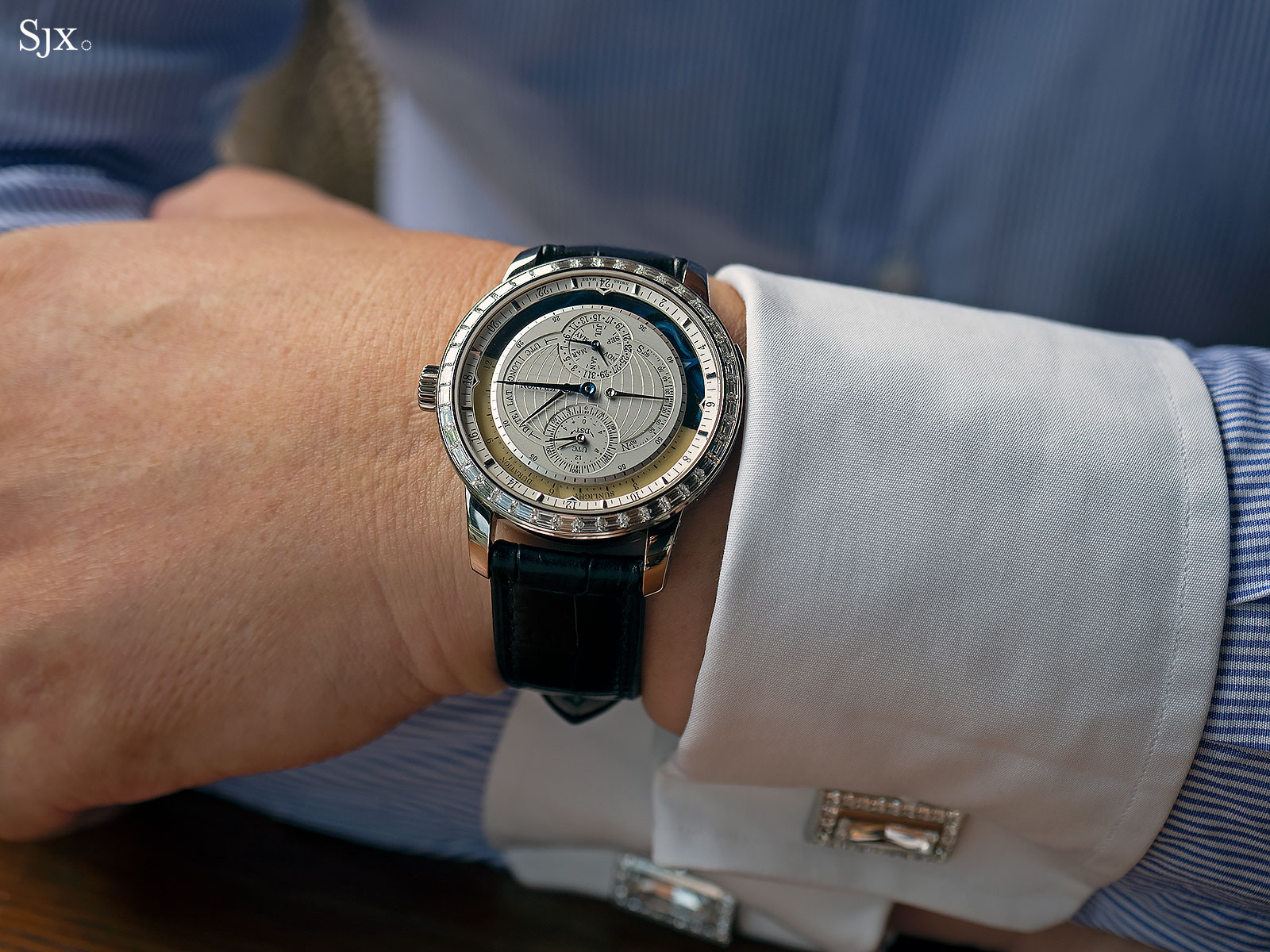
The Everywhere, here with a bezel set with baguette diamonds
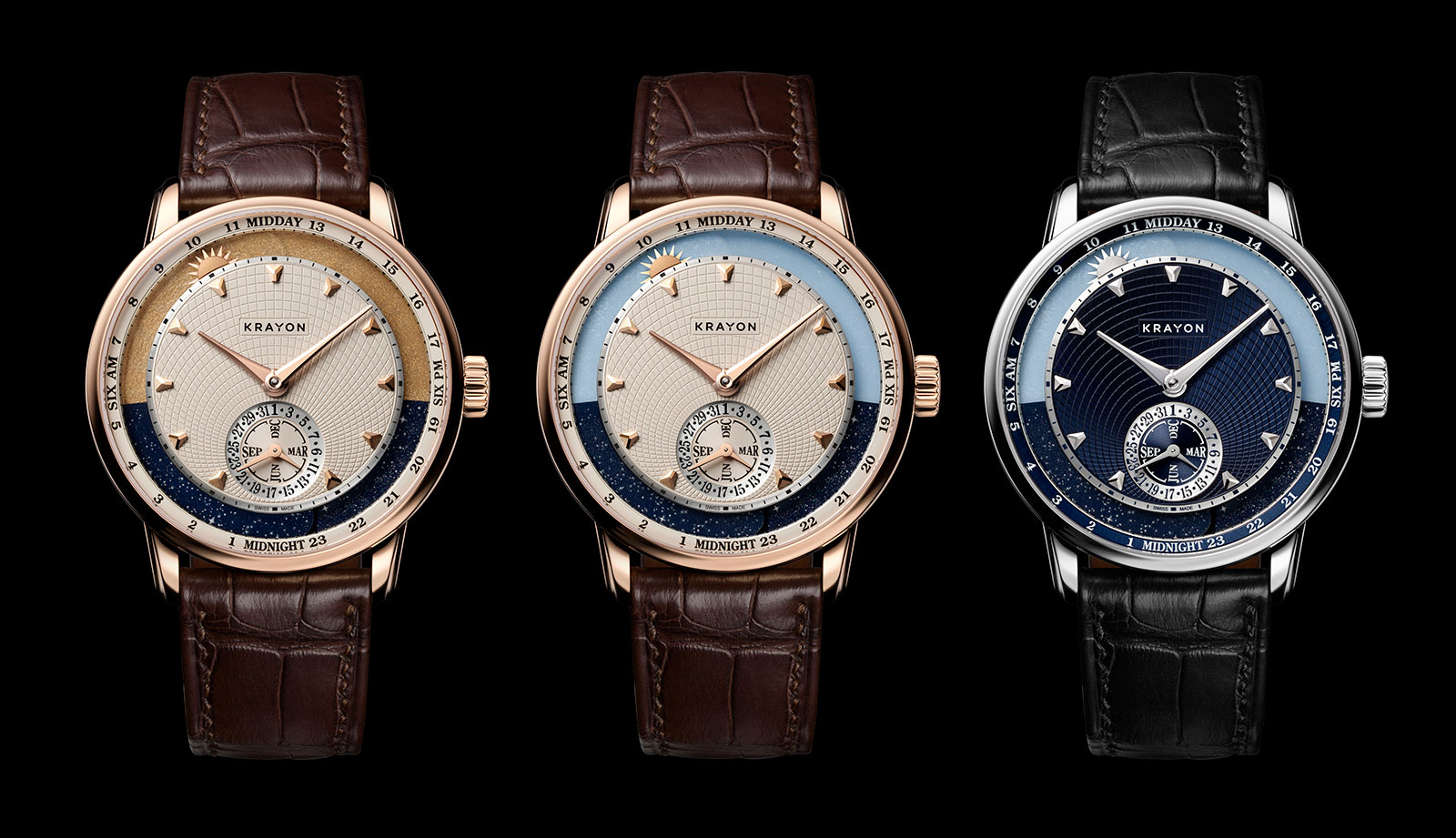
Variants of the Anywhere, in rose gold and white gold
What it does
The Anywhere indicates sunrise and sunset times via rings on the periphery of the dial. Sitting one level below the main dial, the rings are light and dark for daytime and nighttime respectively. The length of the light and dark segments are physical representations of the length of the day and night, with the borders between the two indicating sunrise and sunset.
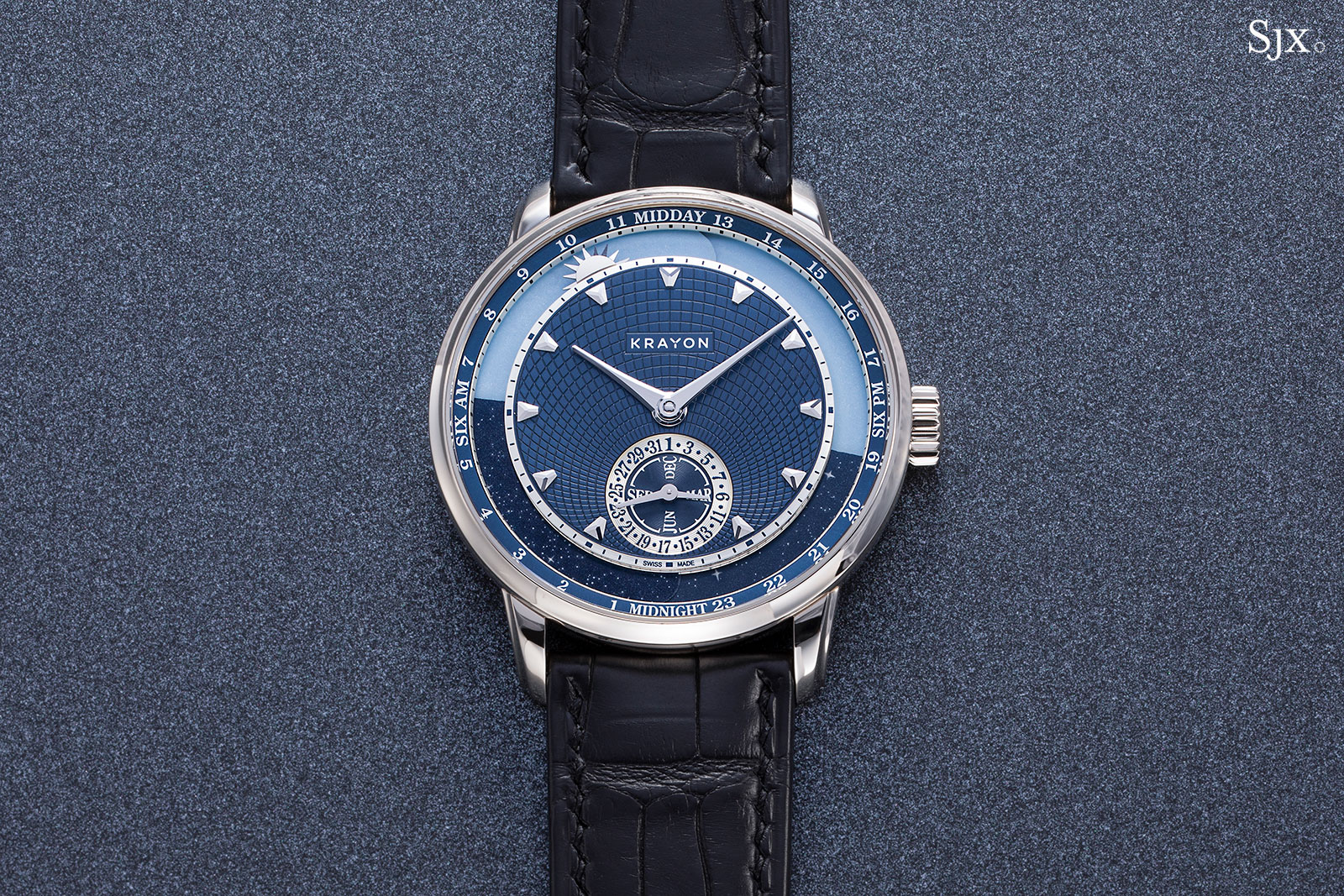
The display above indicates sunrise takes place at about 6 am, while sunset is at 7 pm
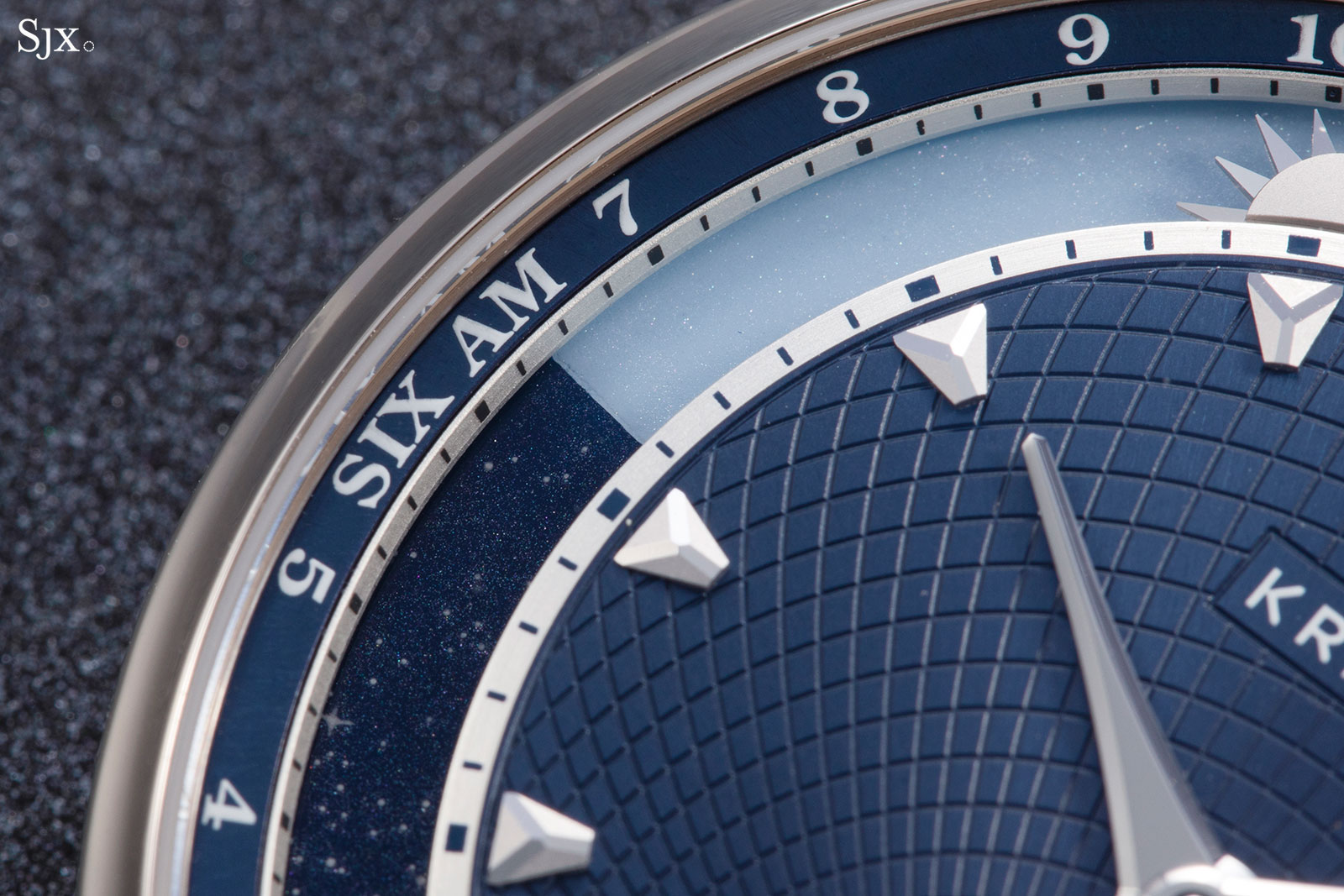
Sunrise will place at about 6:10 am according to the display
Because the length of the day changes according to the seasons in most of the world, the size of the segments will vary throughout the year, and the borders will move as the length of the day changes. The seasonality of sunrise and sunset times explains the calendar display at six o’clock – setting the calendar moves the light and dark rings, reflecting the changing length of the day throughout the year.
In the northern hemisphere, nights will be long during the winter months, leading to a large dark segment. While at the equator, day and night are almost equal in length all the time, so the light and dark segments will each occupy about half the dial and remain mostly unchanged throughout the year.
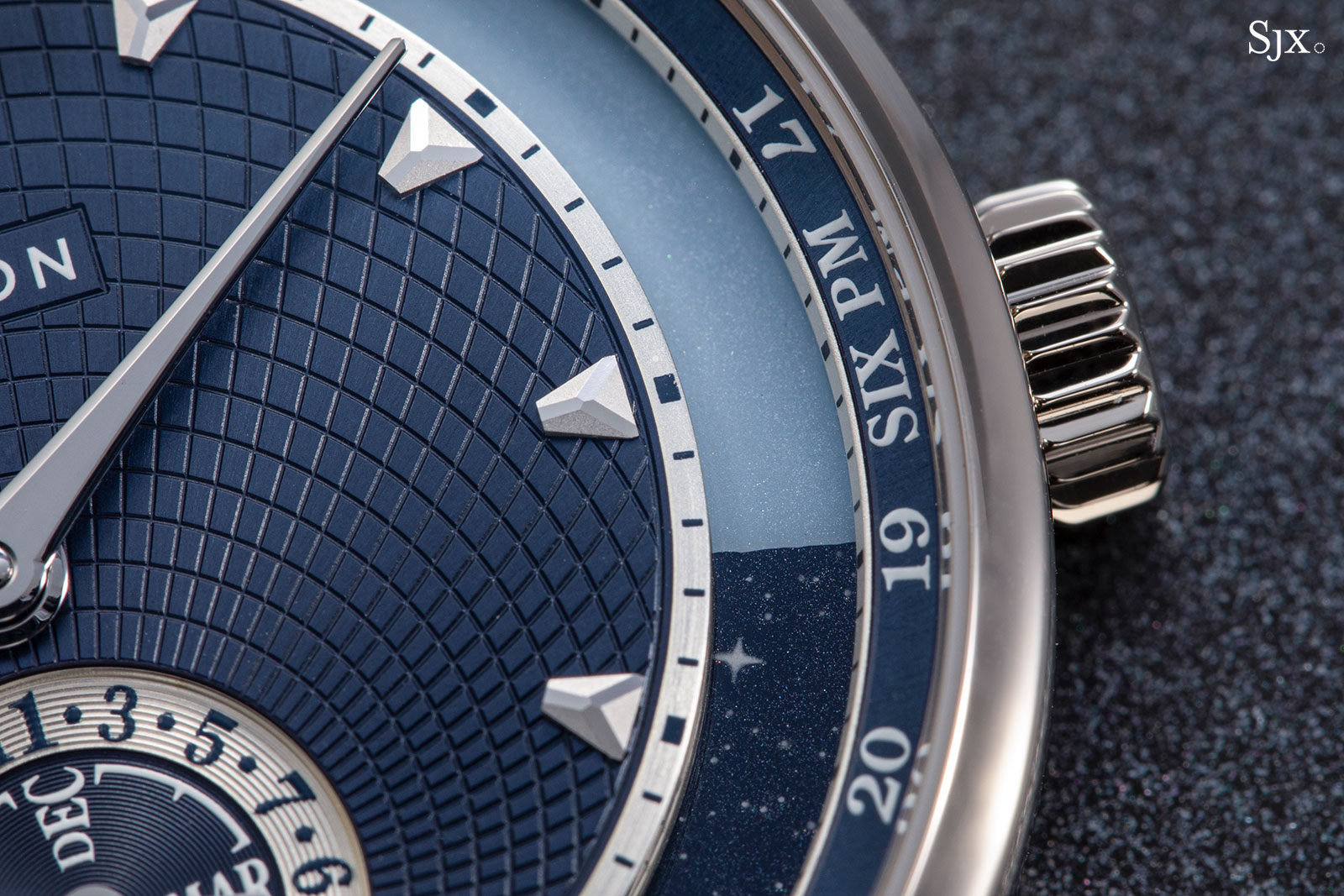
Sunset at about 6:25 pm
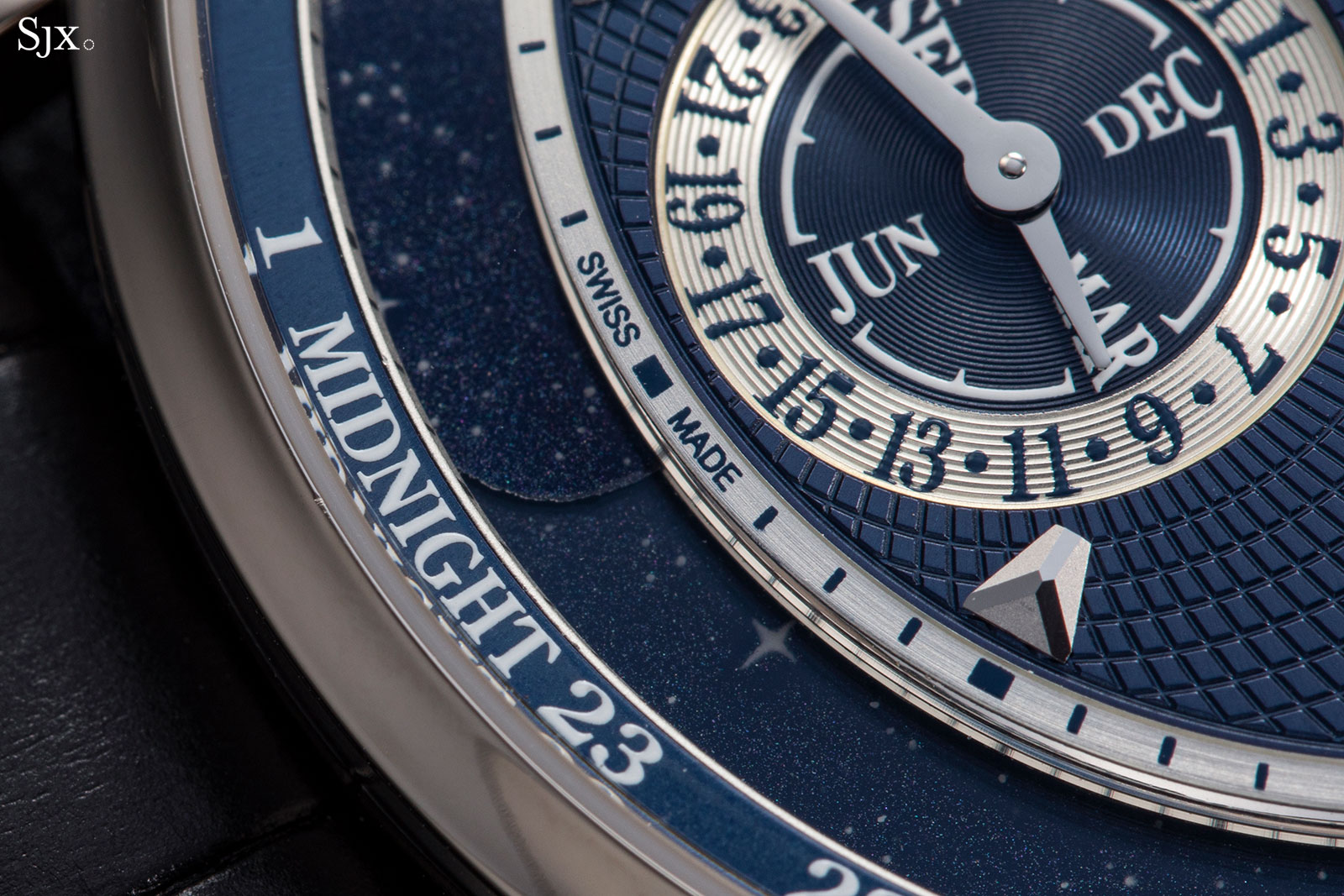
Up close the layers of the rings can be discerned
A Sun-shaped pointer on the edge of the dial is a 24-hour indicator, while also functioning as a display of the motion of the Sun. When the Sun pointer crosses the border from light to dark segment, it means the Sun has set.
But unlike the Everywhere that could be adjusted for any location on Earth, the Anywhere can only show sunrise and sunset times for one location. Though the location can be changed easily via a series of adjustment screws in the movement, a watchmaker has to open the watch and make the change.
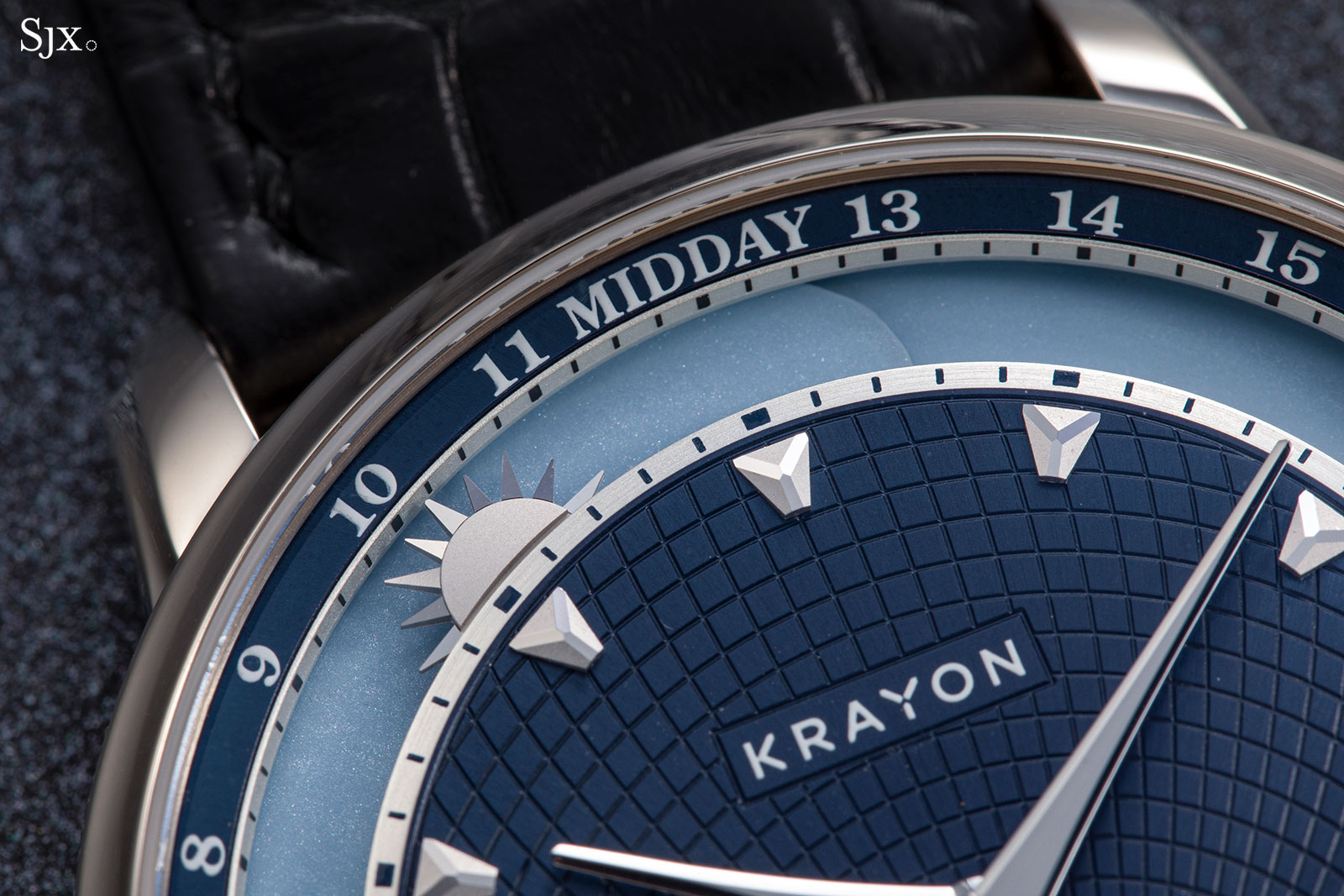
Displayed concisely
Even though a lot of information is displayed on the dial, legibility and order have been preserved. The dial is laid out symmetrically and sensibly. The sunrise and sunset indicators are extremely easy to read, though the calendar takes more effort.
The date track is squeezed on a small sub-dial, but the numerals are large and easy enough to figure out. The month indicator, however, takes a bit more thought. The month hand moves continuously throughout the month, so each month is a segment on the scale, rather than a specific point. To help things along, the segment for the last month of calendar quarter is spelled out.
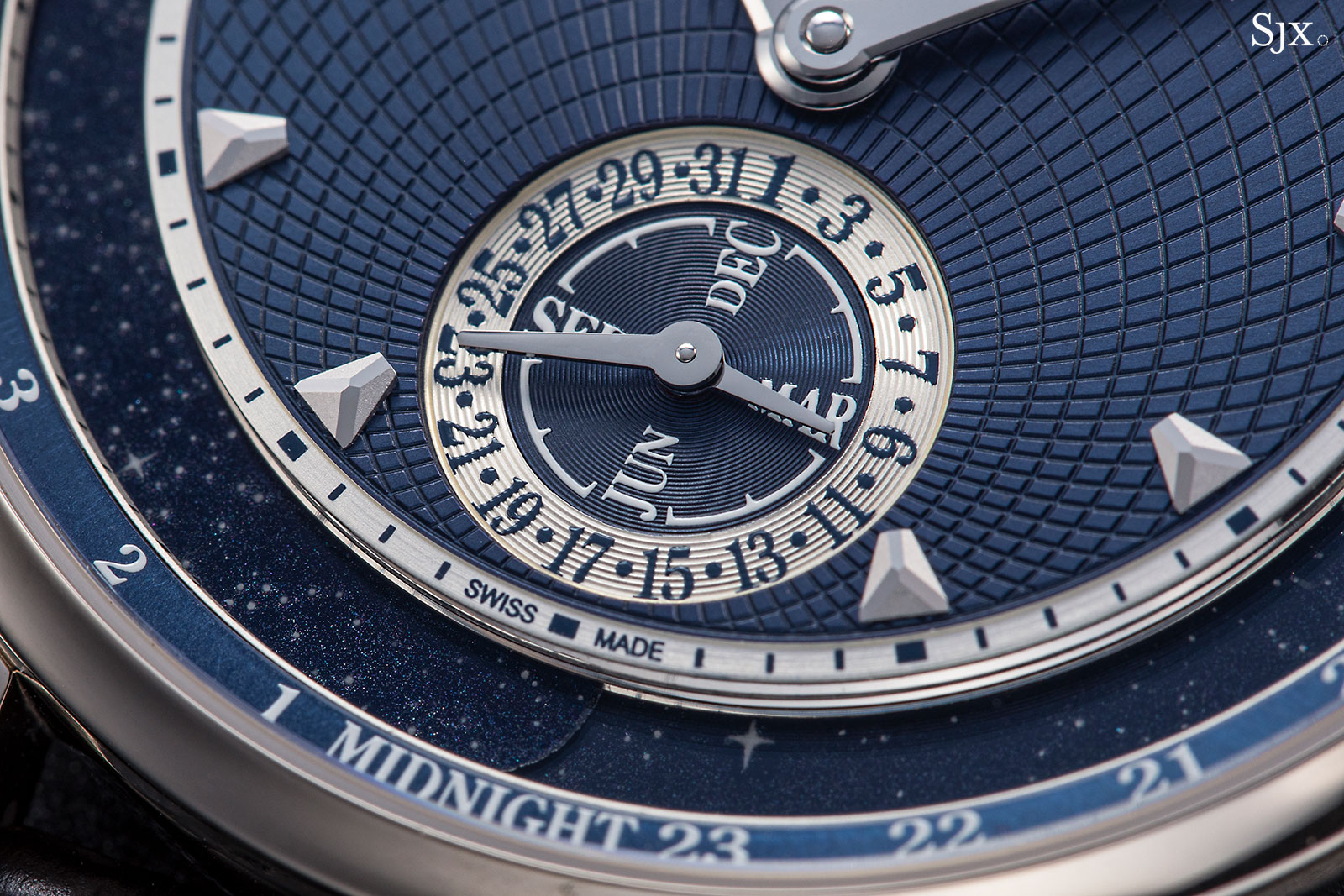
Simple in style, the dial is nonetheless of good quality. The stamped guilloche is neatly done, but the highlights are the hands and hour markers, both modelled on the shape of the three-pointed “Y” logo of Krayon.
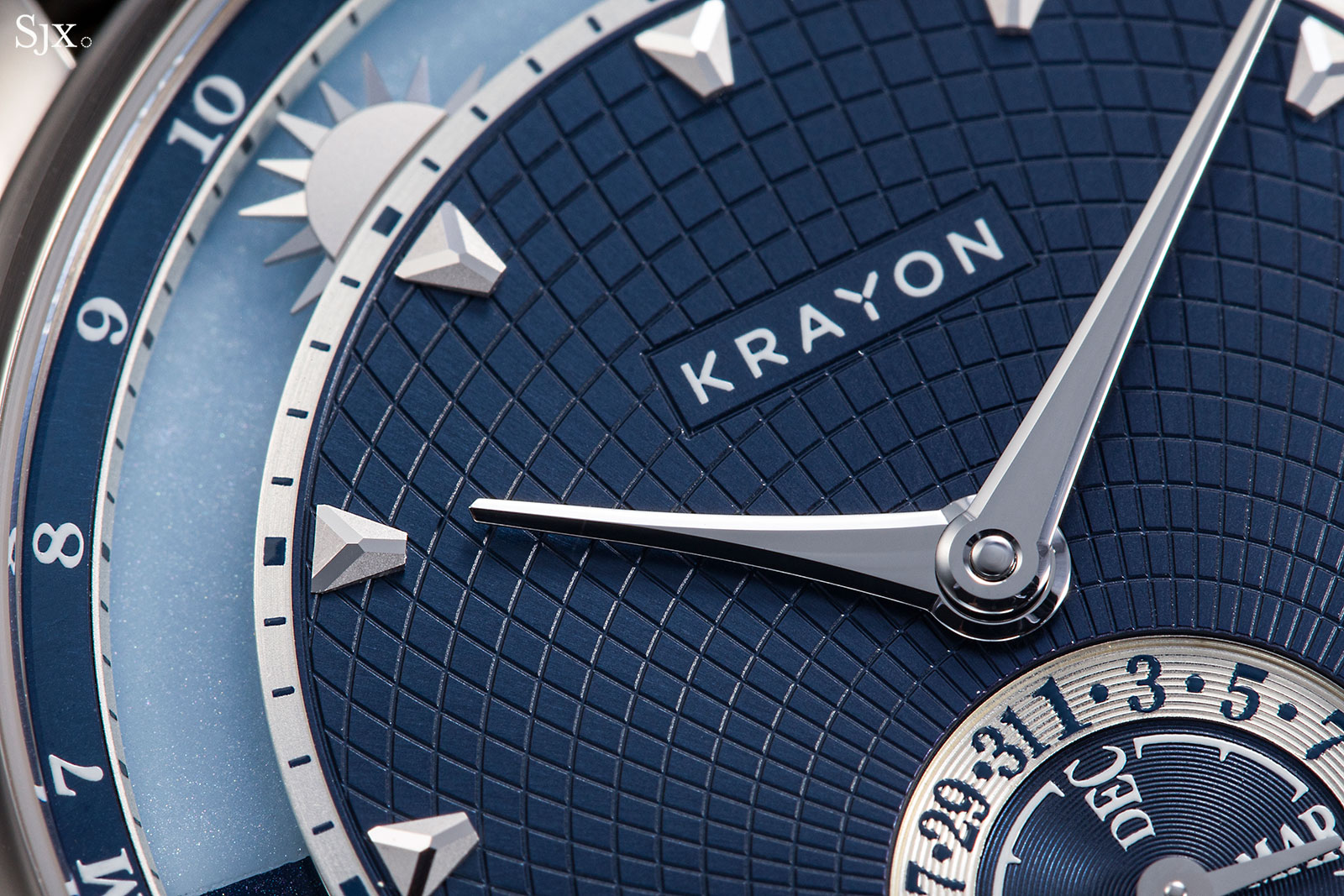
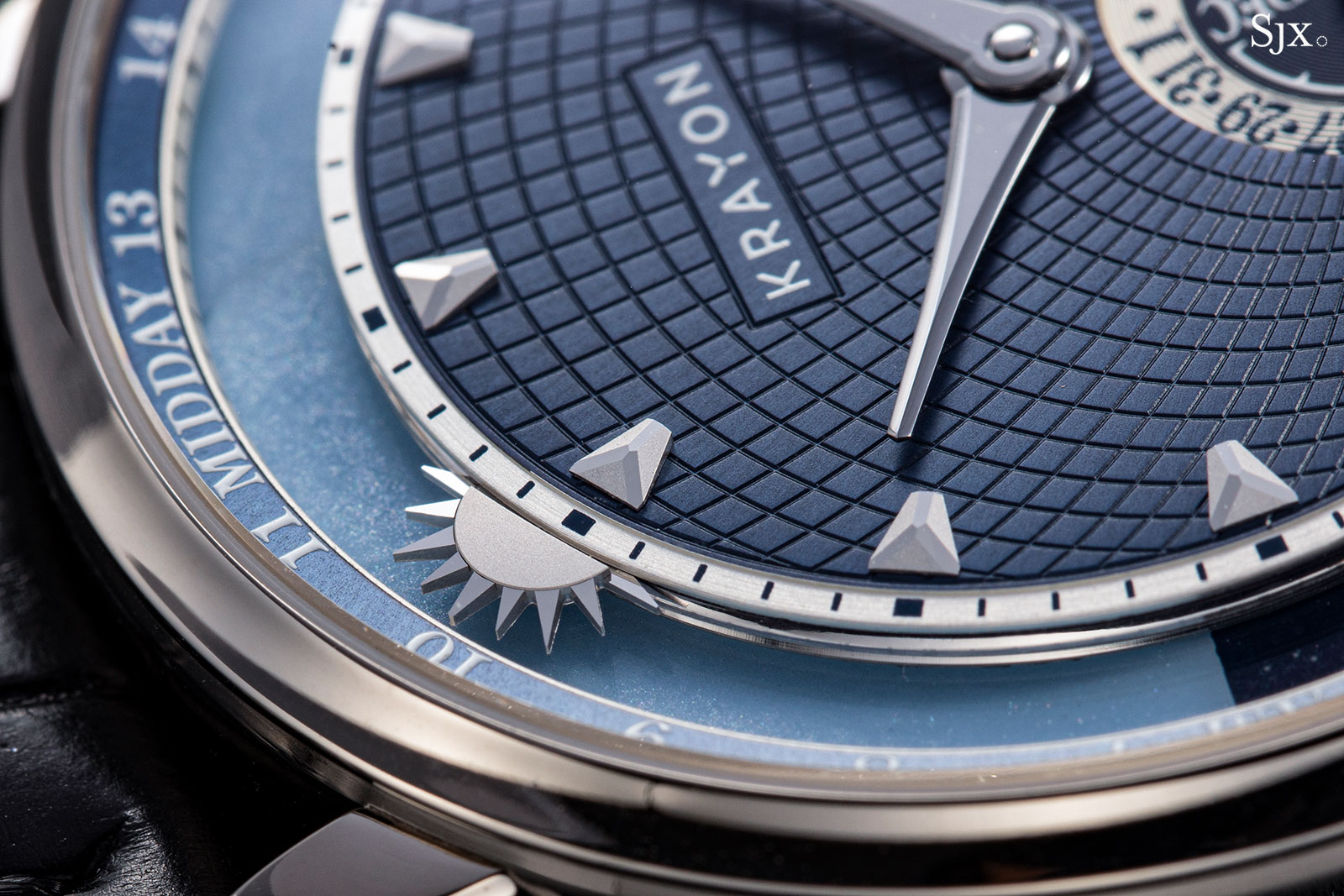
Fairly substantial in thickness, the hands are entirely mirrored polished. The hour markers, in contrast, have frosted flanks separated by a mirrored “Y”, no doubt accomplished by cutting with a diamond-tipped tool, explaining the sharp edges.
And in the Sun-shaped pointer is rendered in a similar style. The central half circle of the Sun is frosted, while the rays are mirrored; that is done with a two-piece pointer made up of a lower section with the rays topped by the frosted disc.
The finish of the hour markers is impressive, but they are too short and sharp for the overall style of the watch, and more specifically, the elongated hands. Longer hour indices that echo the shape of the hands would have made more aesthetic sense. Conversely, the markings on the sunrise and sunset chapter ring look unnecessarily large, and would look better scaled down.
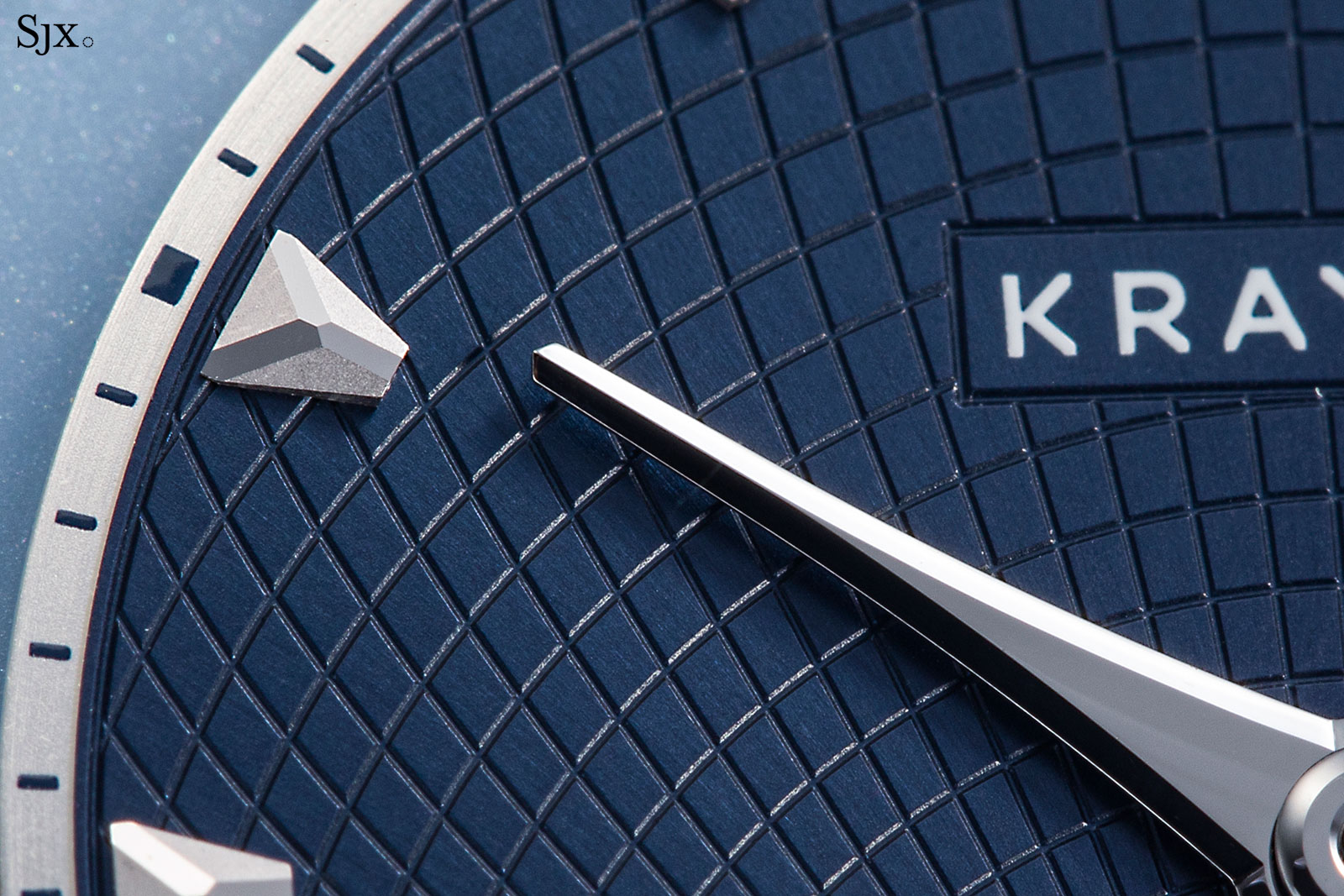
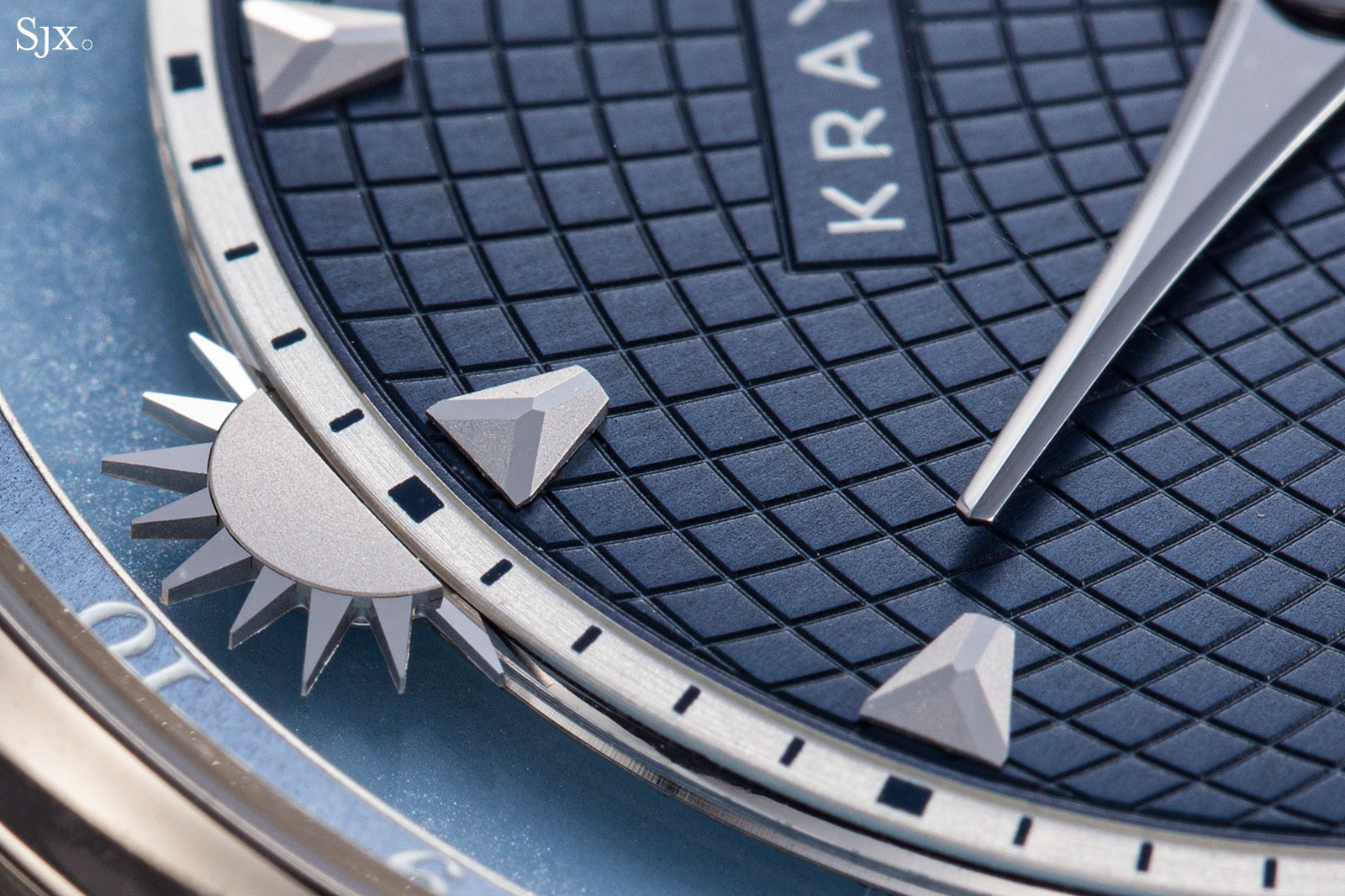
Note the contrasting finish on the individual hour markers
Vichet-esque
Measuring 39 mm by 9.5 mm, the case looks smaller than it is, which is rare for a highly-complicated watch.
The case is properly detailed, despite its simple form. The bezel is concave, which emphasises the size of the face, while the top and bottom faces of the case band have a subtle bevel where each meets the bezel and back.
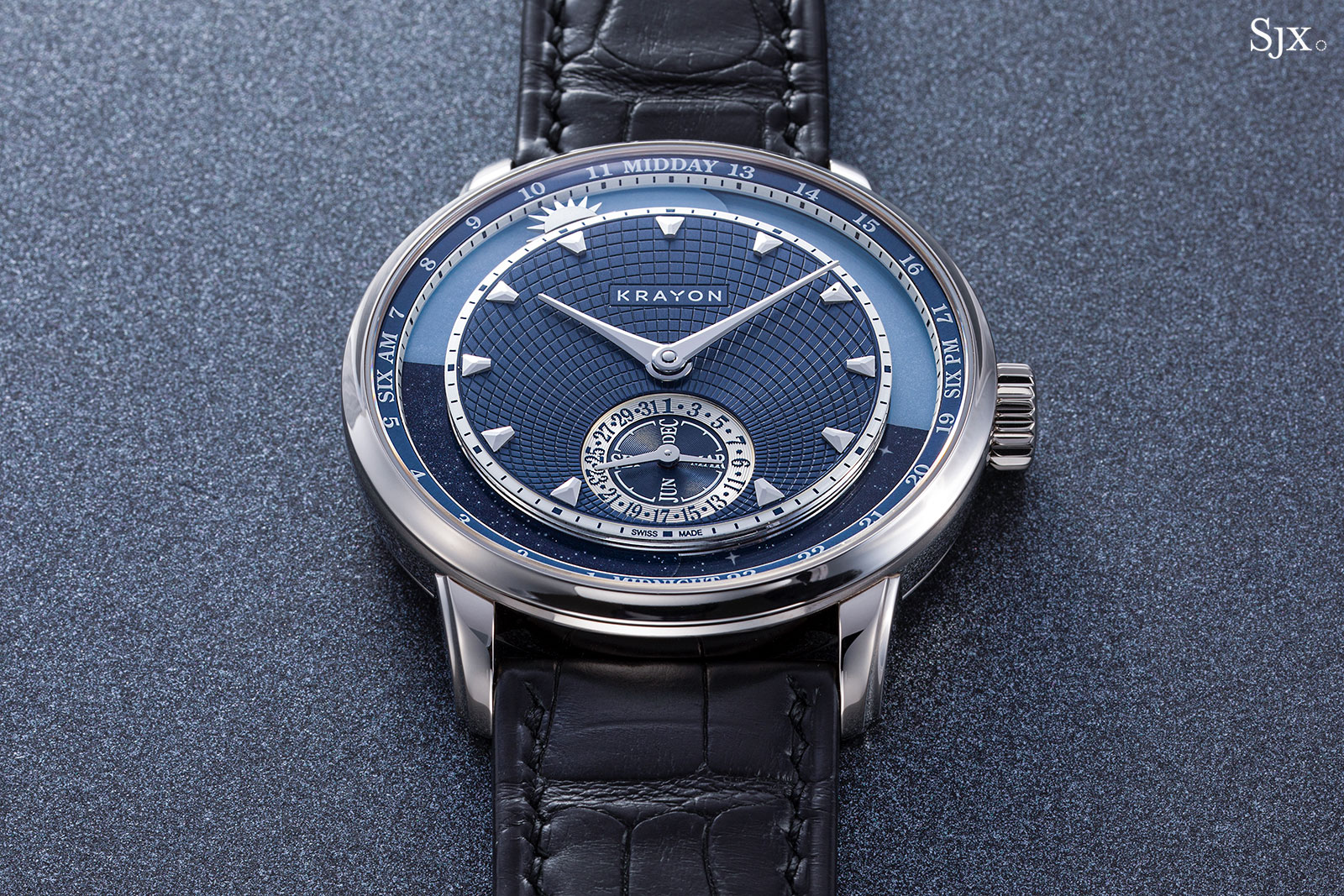
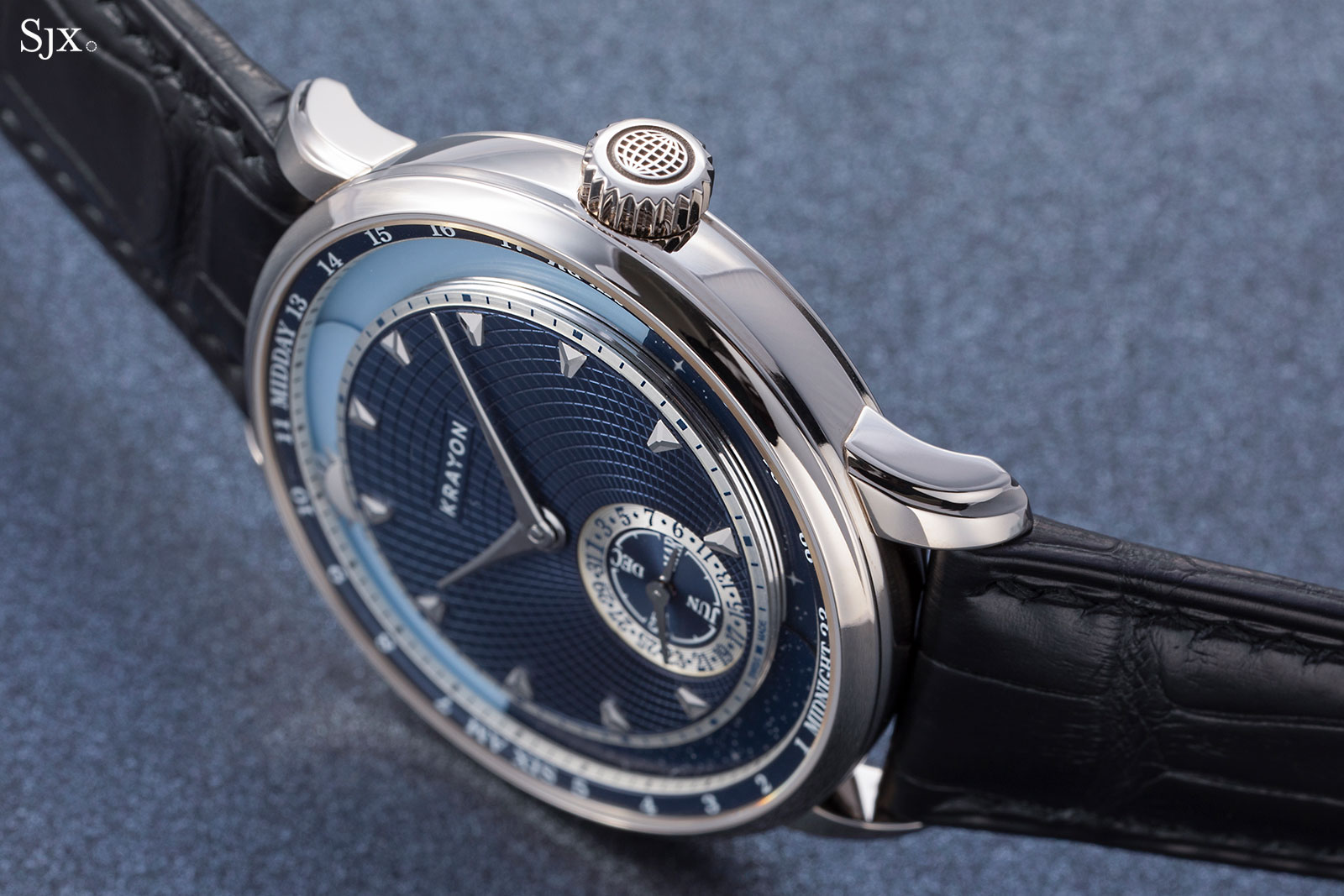
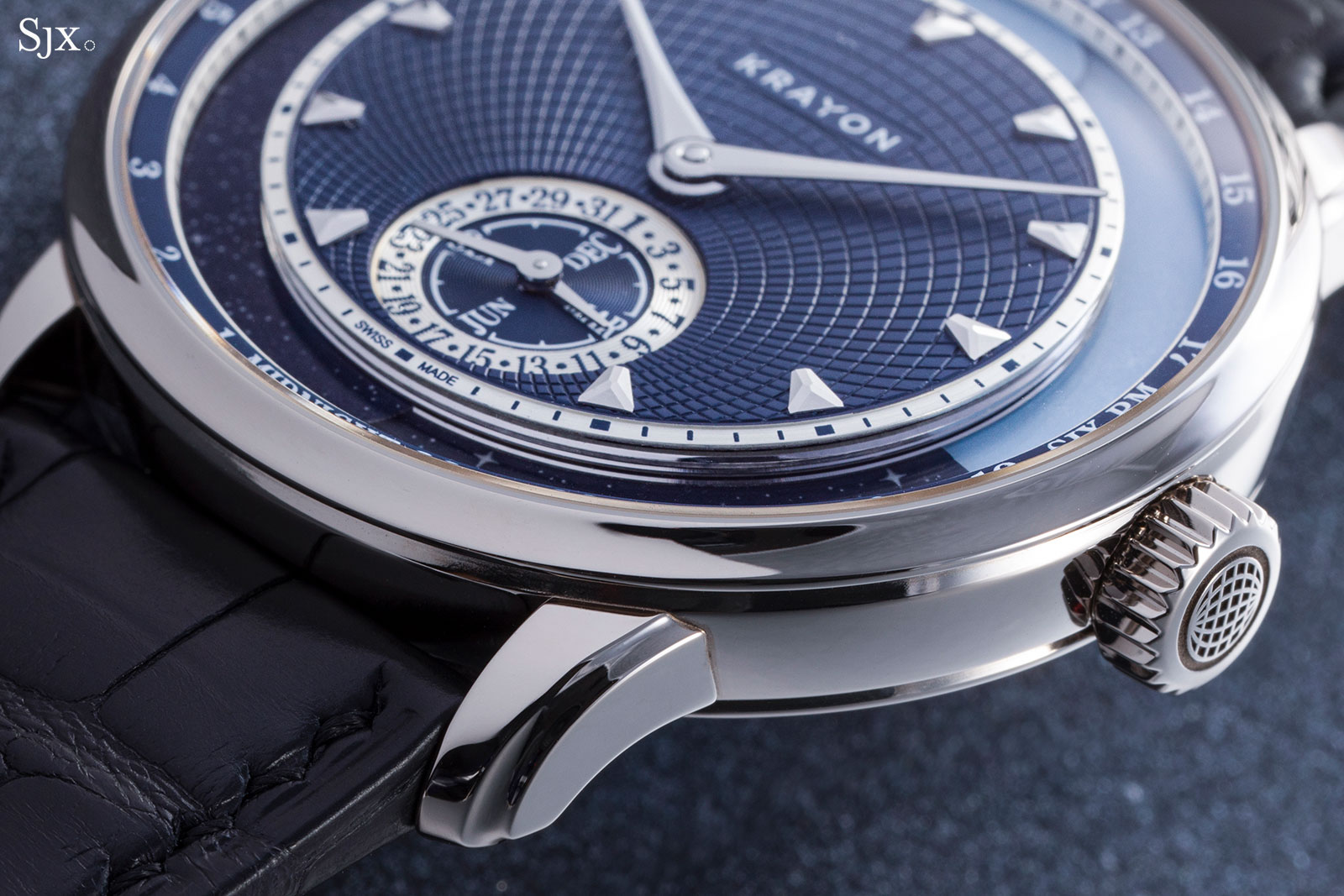
Most notably, the lugs have wide, concave fluting on their outer edges, bringing to mind the watch cases made by Emile Vichet for Patek Philippe, which were the inspiration for the Akrivia Chronometre Contemporain case.
Overall, the case is well designed, while maintaining a strong element of simplicity. It doesn’t try to do too much, which is the prudent thing to do given that there’s a lot going on elsewhere.
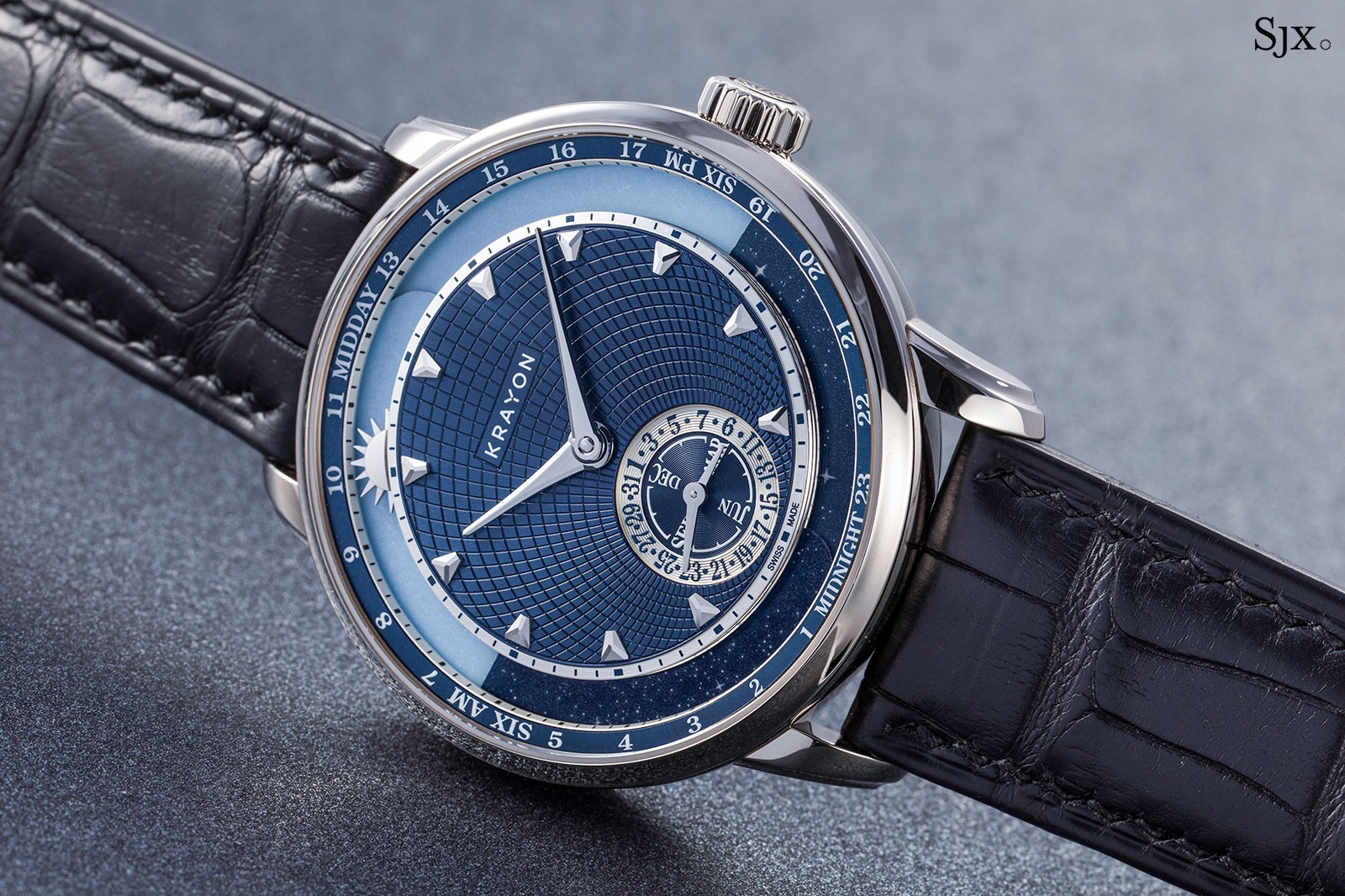
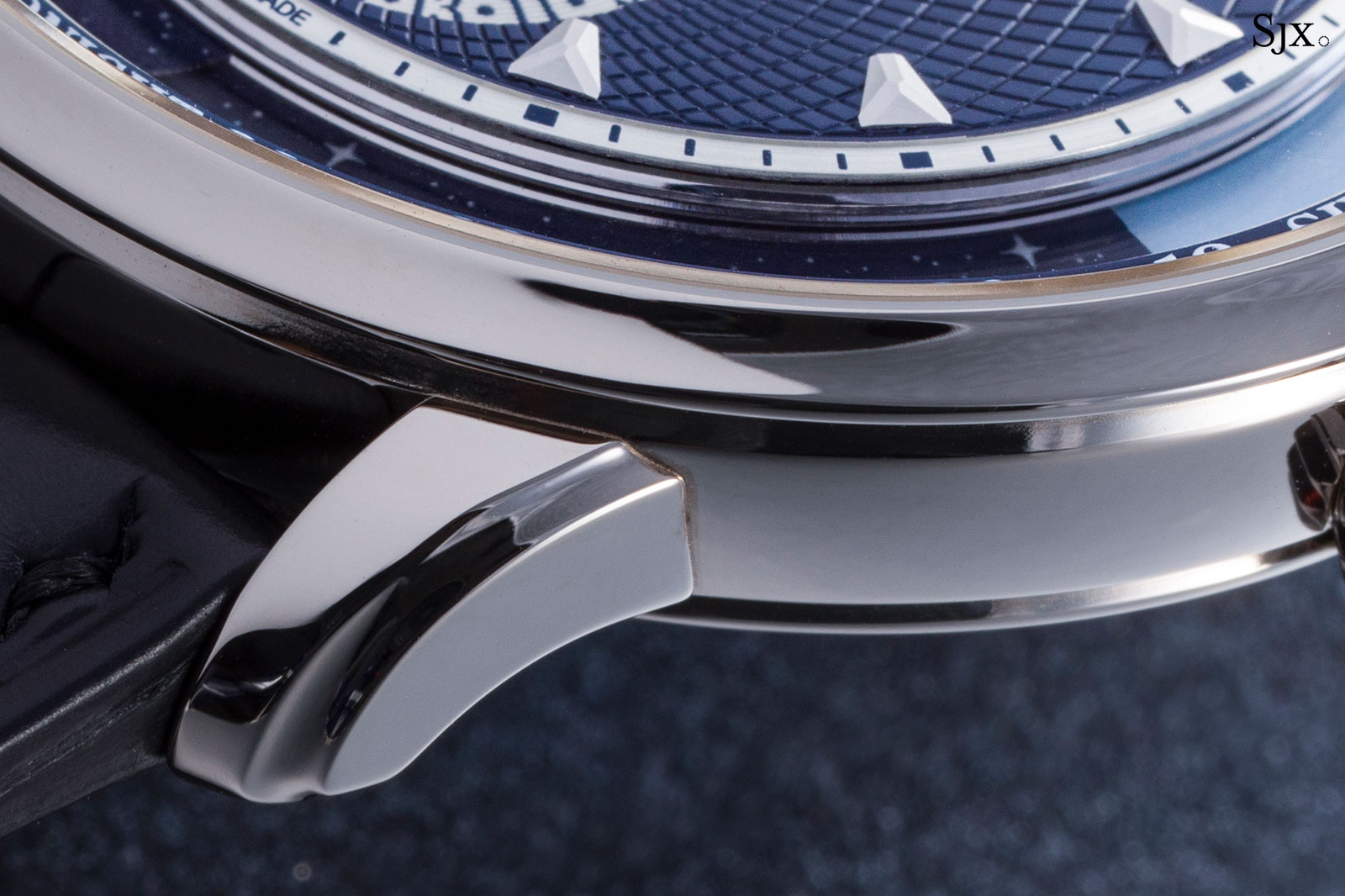
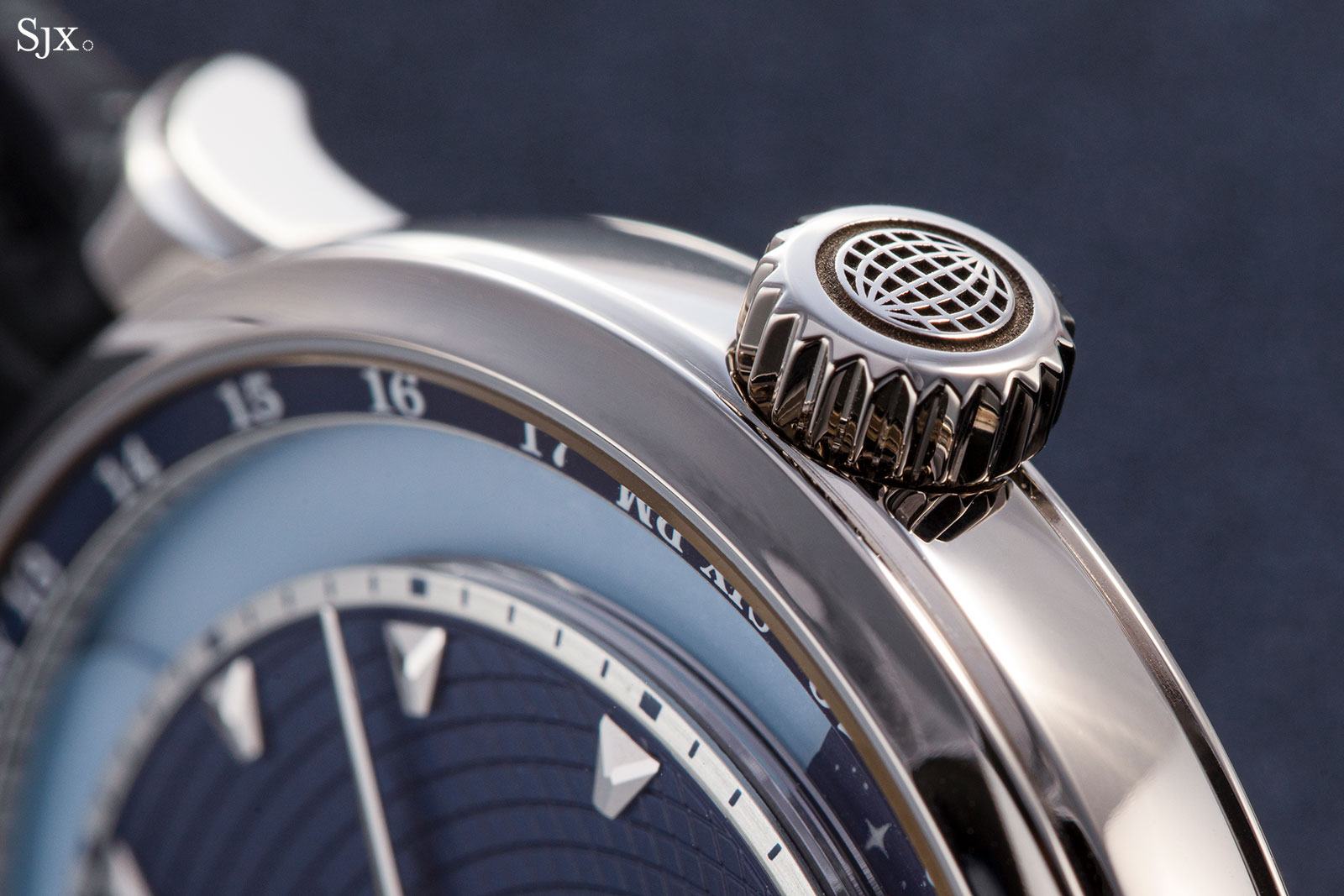
Simplifying the complex
Having spent the bulk of his career developing movements for Cartier’s Fine Watchmaking collection, Krayon founder Mr Maillat is skilled at building highly-complicated movements. The cal. C030 in the Anywhere is made up of over 430 components, making it comparable to the 465-part L001.1 inside the A. Lange & Söhne Double Split.
The cal. C030 is a large, 35.4 mm movement that properly fills the 39 mm watch case. Though similar in function, the cal. C030 was conceived with a different philosophy compared to its more complex predecessor in the Everywhere.
The movement in the Everywhere was basically a calculator – input the latitude, longitude and time zone to see sunrise and sunset times – hence the moniker, Universal Sunrise Sunset (USS) calibre. In contrast, the cal. C030 of the Anywhere is more straightforward.
While sharing from same basic architecture as the USS, the cal. C030 in the Anywhere does away with the input and adjustment mechanisms, significantly simplified the mechanics. At the same time, it raises the quality and detail of the movement decoration by a large, obvious margin.
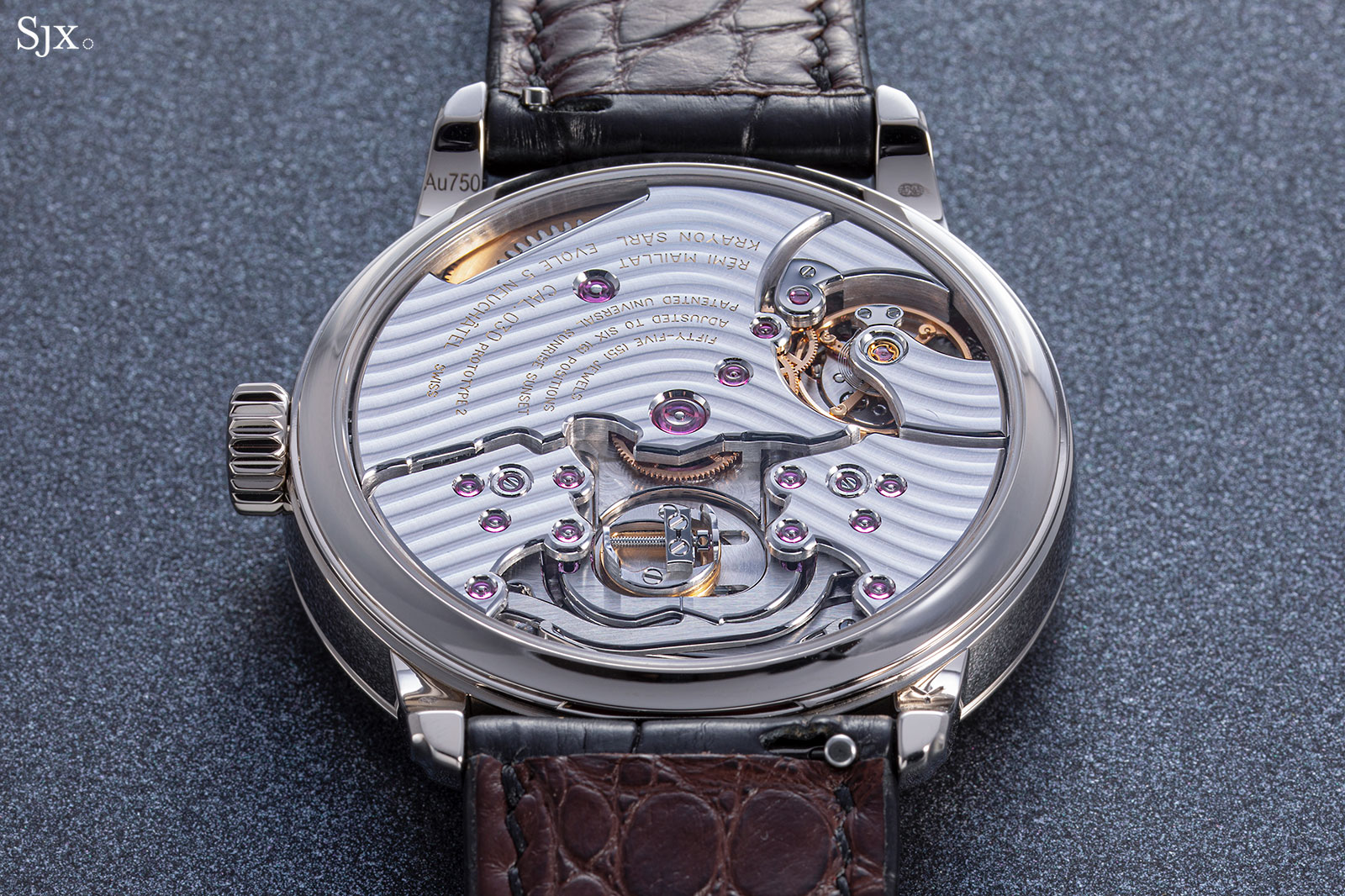
The cal. C030 in the Anywhere
The movement is logically laid out, with the key bits separated into two distinct halves.
Hidden under a large barrel bridge, the top half is dedicated to the going train for timekeeping, which transmits power from the mainspring to the escapement. It’s constructed in a fairly classical manner, with a barrel that is approximately half the diameter of the movement, providing robust torque as well as a longish 86-hour power reserve.
The barrel drives a conventional second wheel, located at the movement’s centre under an extra-large jewel, which turns the minute hand. The rest of the going train as well as the escapement is also enclosed in the upper half, leaving the rest of the space for the sunrise and sunset mechanism.
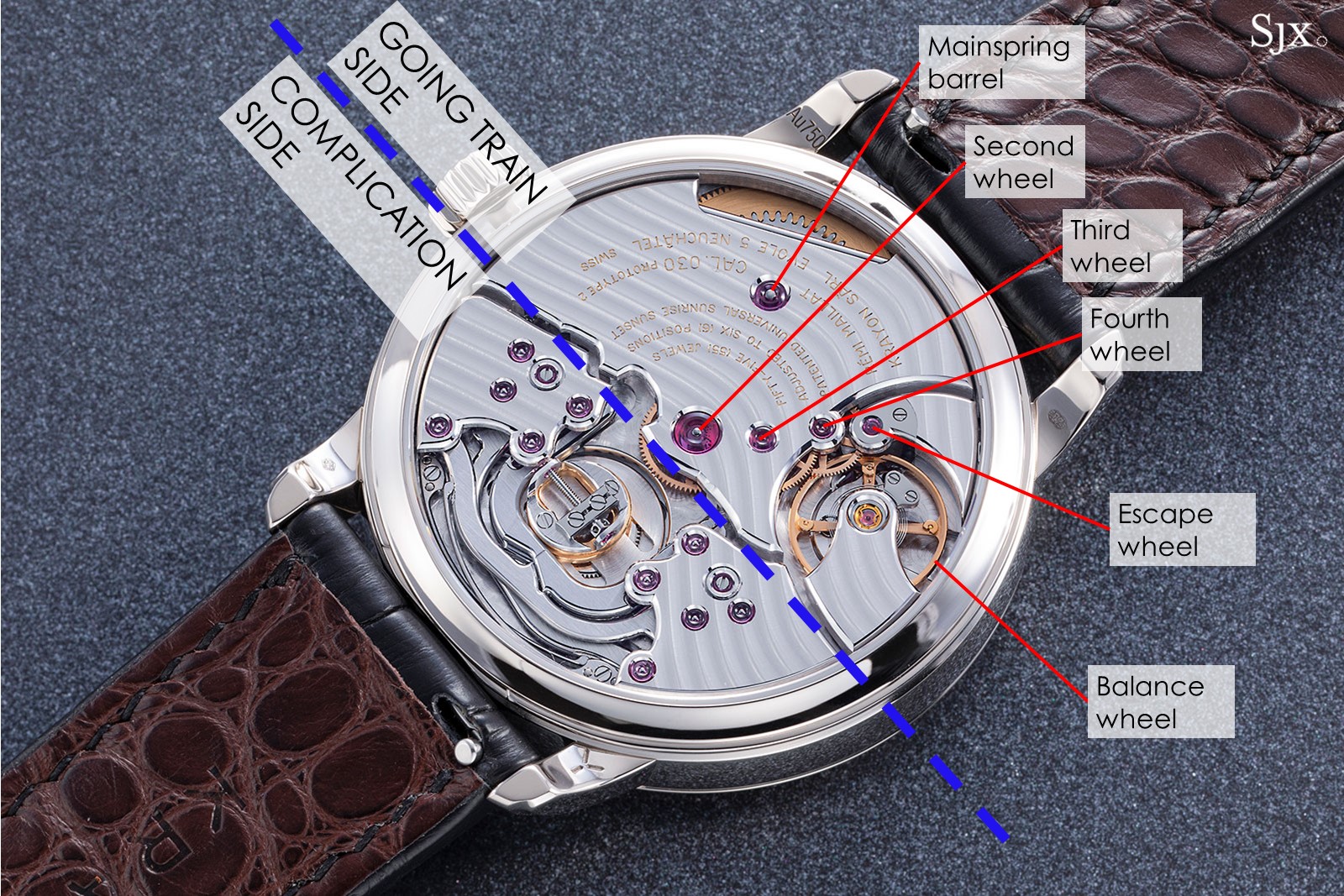
Sunrise and sunset
The lower half of the movement is where things get interesting. While complex and unfamiliar at a first glance, the principles of the sunrise and sunset mechanism can be understood quite easily since all of the key components of the mechanism are exposed.
As sunrise and sunset times vary over the year, the simplest means of displaying the information is a rotating cam that makes one revolution once every year. The shape of the cam needs to be “read” mechanically in order for its shaped to be translated into the dial display of sunrise and sunset times.
As the centrepiece of the sunrise and sunset mechanism, the cam takes centre stage in the cal. C030. Elaborately constructed, the cam looks the part – the heart of a complex contraption – but is actually mechanically simple, and slow moving. The cam makes one full rotation over a year, pushing against U-shaped sliding racks as it does so.
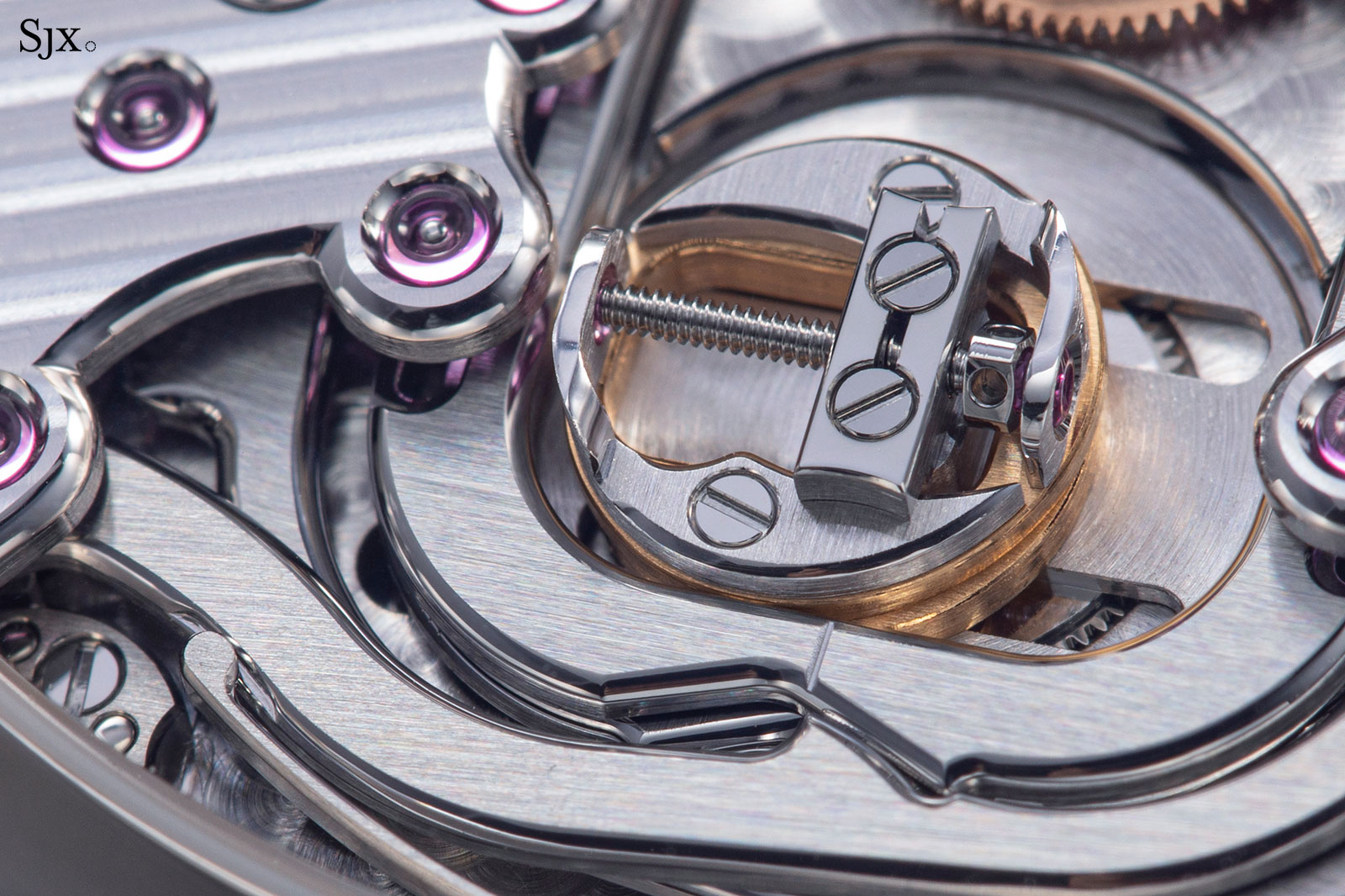
The cam, with the U-shaped racks next to it
Because the cam has two levels, the U-shaped racks are also a pair, arranged on two corresponding levels, one each for sunrise and sunset times. Sunrise and sunset times vary at different rates throughout the year, a consequence of the Earth’s oblique and eccentric orbit around the Sun, meaning the racks for each need to move at different rates, hence the two levels.
The phenomenon is also known as equation of time, which charts the difference between apparent solar time based on the Earth’s orbit and the 24-hour day of mean solar time. Though the Anywhere does not display the equation of time, the information is mechanically encoded into the cams for sunrise and sunset.
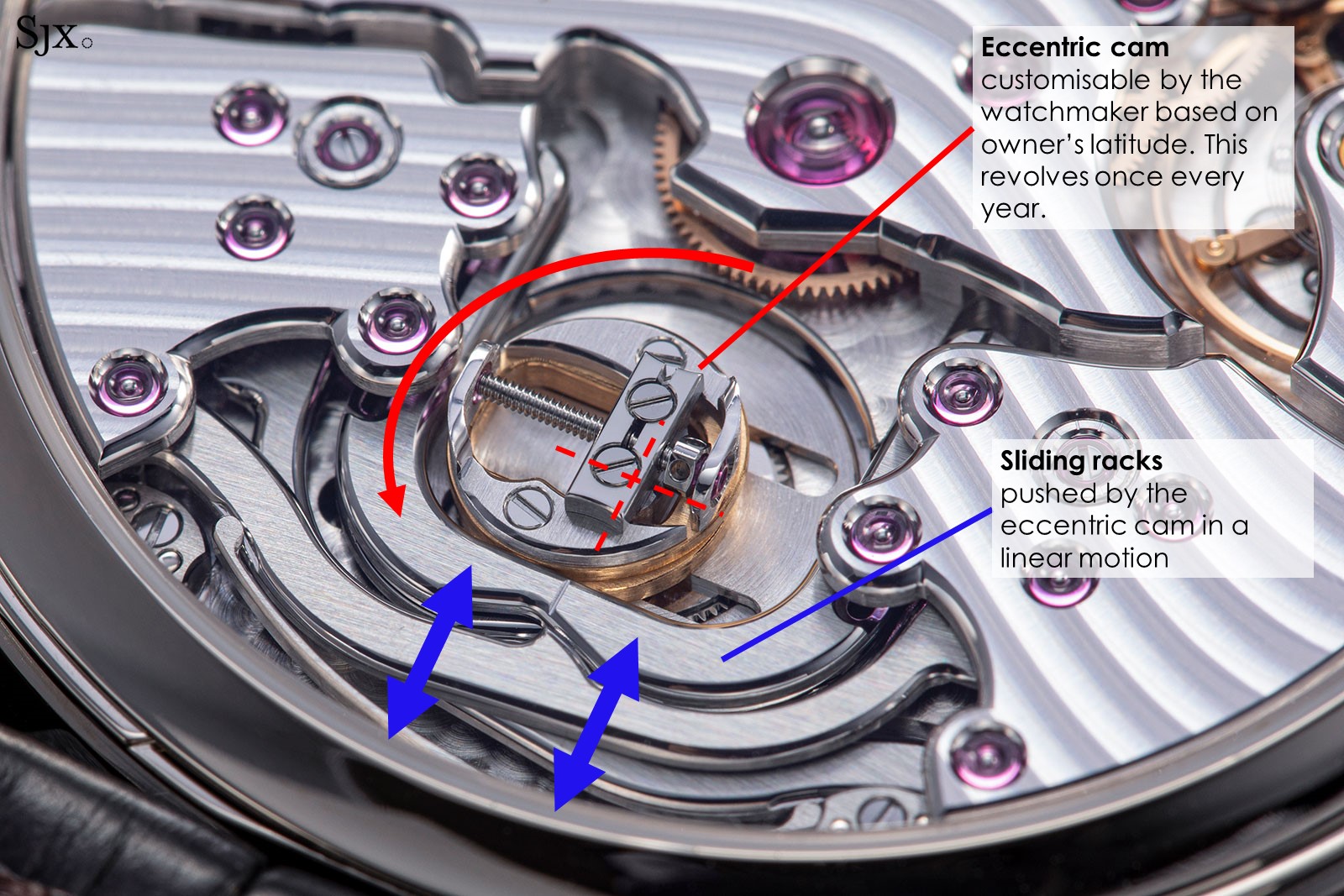
The rotation of the cam cause the U-shaped racks push against the bow-shaped sunrise and sunset racks, each secured by a tension spring. The tips of each bow-shaped rack drive the sunrise and sunset pinions respectively, which in turn move the sunrise and sunset rings on the dial.
As the U-shaped racks are pushed by the cam towards the edge of the case, the light-coloured daytime rings increase in length, reflecting the longer days during the summer, and vice versa for the winter, when the cam moves towards the centre of the movement.
Though both sets of racks are constructed on two levels, they are symmetrical. Beyond the pleasing aesthetics, this ensures both the sunrise and sunset rings move correctly, which is in opposite directions. In comparison, the USS movement of the Everywhere contained racks that pivot asymmetrically on the same side, hence move in the same direction, due to the differential gears required by its location setting mechanisms.
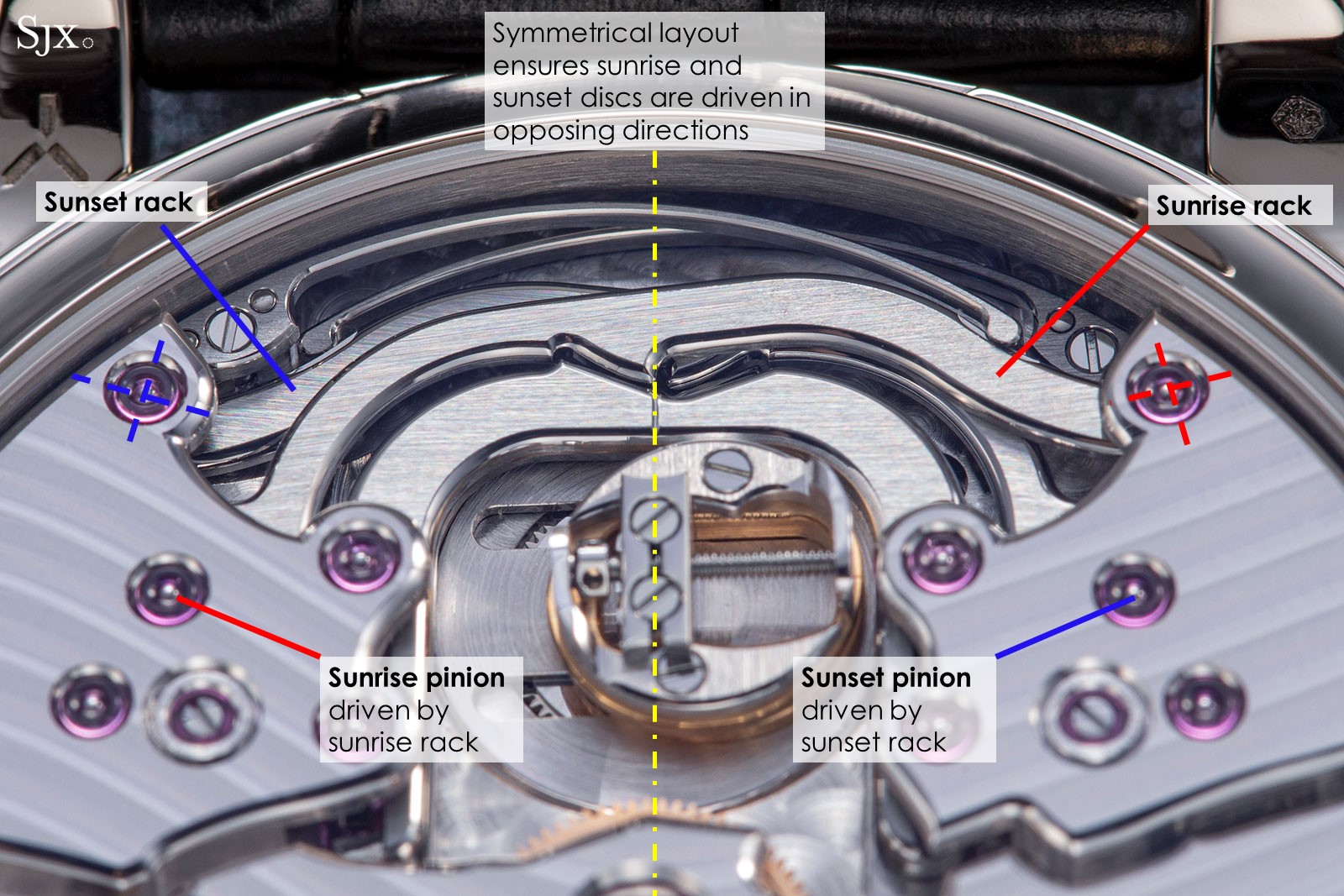
The symmetrical configuration of the racks in the Anywhere movement
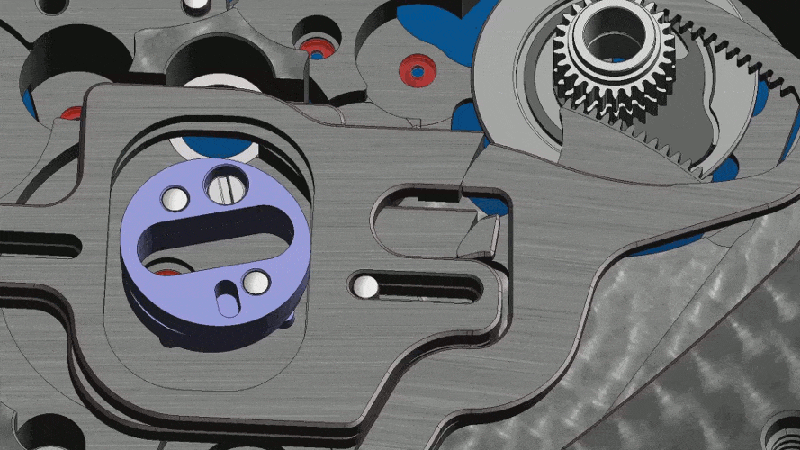
The asymmetrically-arranged racks in the Everywhere
Also worth noting is the fact that the eccentric cams in both the Everywhere and Anywhere movements take 372 days to make a full revolution – not exactly a 365-day year.
The reason is the simple calendar mechanism used in both movements, which has a default 31 days for every month, requiring manual adjustment for shorter months. Because the cam is mechanically linked to the month hand on the dial, the cam is calibrated for 12 months of 31 days each, which is 372 days.
Setting sunrise and sunset
But sunrise and sunset times differ according to locations – the fundamental premise of the complication inside the Everywhere, which allowed the wearer to adjust the watch for any specific location.
The most important determining factor for sunrise and sunset times is latitude. Because the Earth rotates on a tilted axis – imagine a spinning top that’s about to topple over – variations in sunrise and sunset times over the year get more extreme as you move further away from the equator. That’s why countries away from the equator have seasons that change throughout the year – the changing amount of sunlight received means the Earth’s temperature changes.
In contrast, sunrise and sunset times at the equator are almost static over the year, with the length of the day and night being almost identical as well – explaining the unchanging tropical weather of equatorial countries.
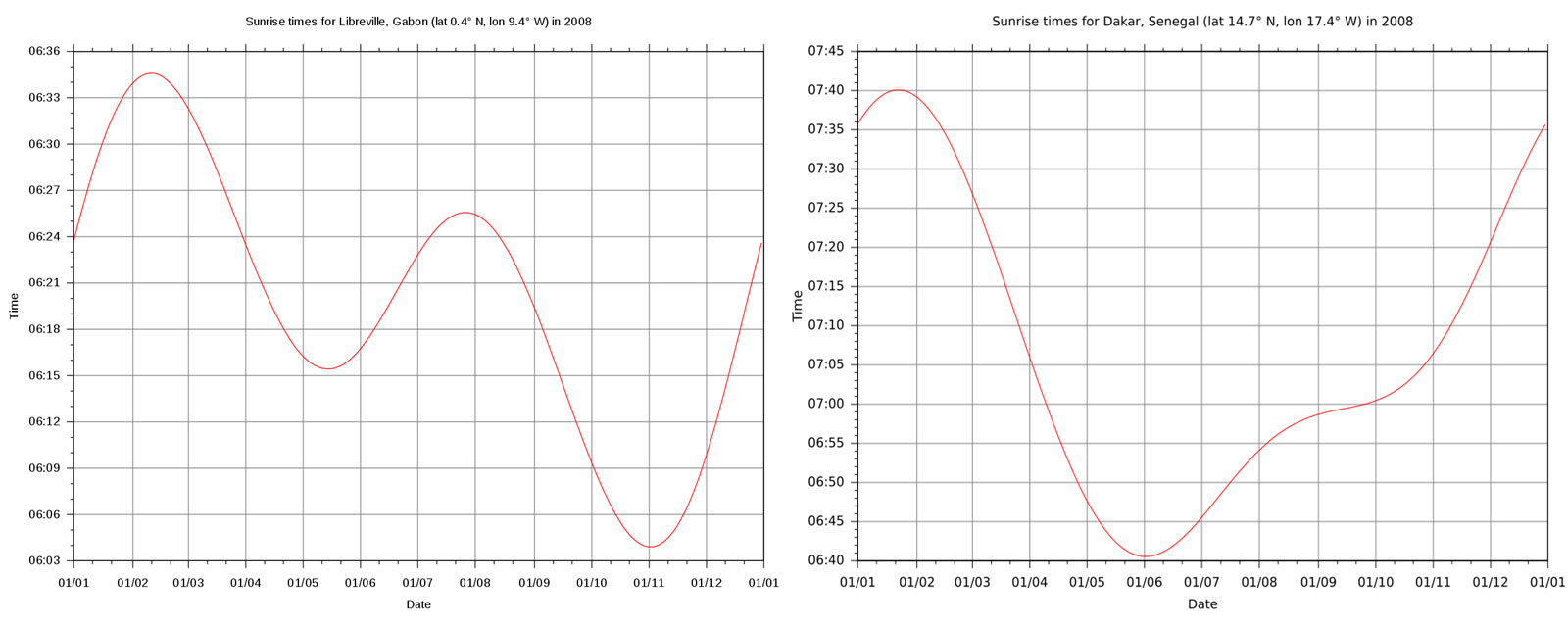
Comparison of sunrise times over a year between two cities on the west coast of Africa: Libreville (lat. 0.4° N) and Dakar (lat. 14.7° N). Source – Wikipedia.
Displaying seasonal sunrise and sunset times at different latitudes would seem to call for separate cams for each latitude – a feasible, but tedious solution. Mr Maillat hit on a much simpler approach – tweaking the eccentricity of the cam, or its position relative to the centre of its area of movement.
The two-level sunrise and sunset cam sits on a pair of parallel tracks, allowing it to slide along the length of the tracks. The cam can be adjusted to sit dead centre along the tracks, which is the position for locations at the equator with no seasonal changes.
At higher latitudes, on the other hand, the cam has to be moved outwards in either direction. As the cam is positioned further out, its rotation will cause an greater magnitude of movement in the racks. Put simply, the further the cam is from the centre, the more the racks will slide, which reflects the greater variation of sunrise and sunset times as latitude increases.
Set when the movement is assembled, the eccentricity of the cam can subsequently be changed minutely via a micrometer screw, but only by a watchmaker. Because the location setting was designed to be adjustable, a watchmaker can change the eccentricity of the cam in a fairly quick procedure without having to replace any parts.
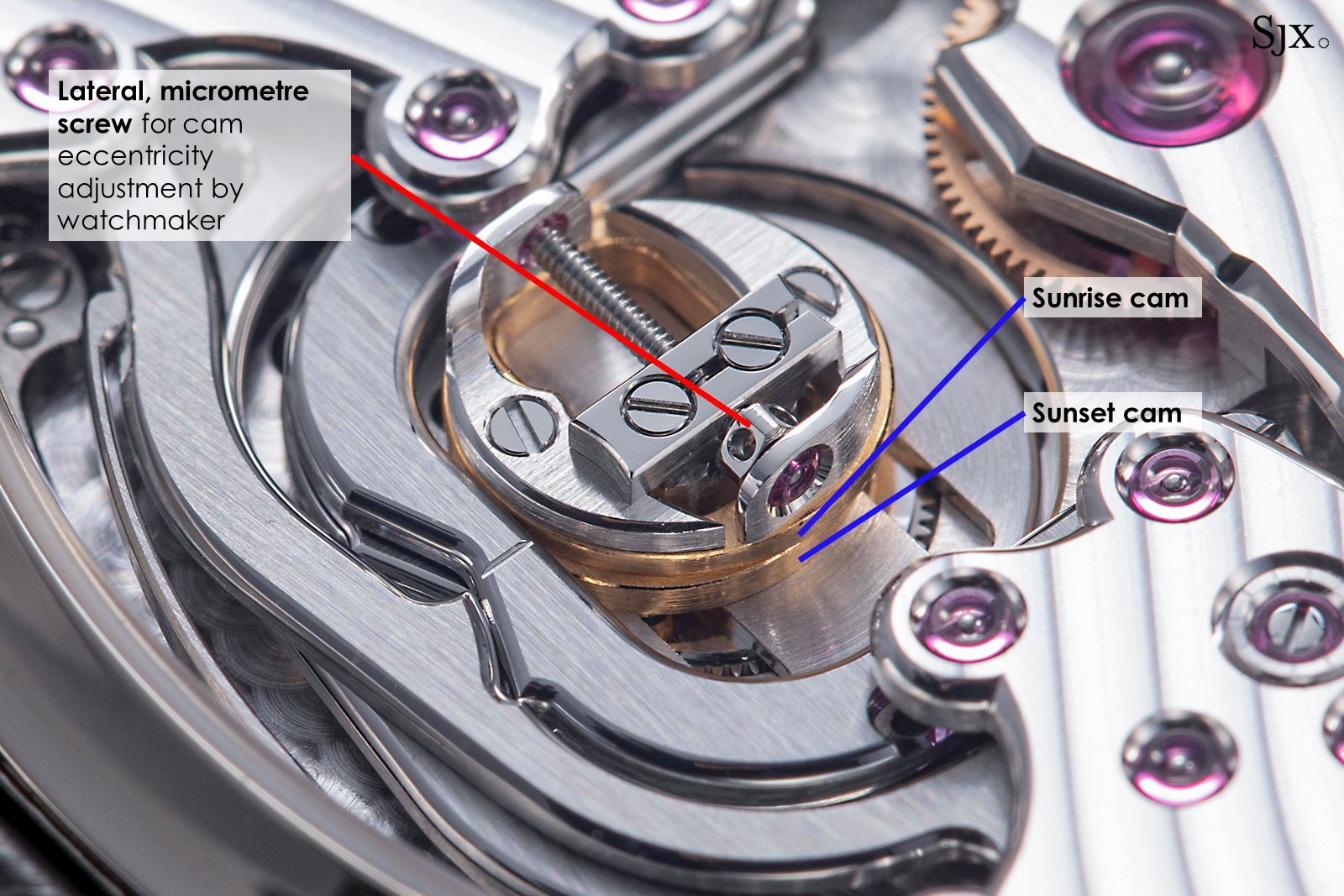
The micrometre screw for adjusting cam eccentricity
But the watchmaker has to do more than change the position of the cam, as sunrise and sunset times are also determined by longitude and time zone, since a country’s practical time zone may differ from its geographical time zone. The entirety of China, for instance, runs on Beijing Time (GMT+8), despite the country actually spanning five geographical time zones. As a result, Easternmost China sees sunrise five hours ahead of its westernmost point, despite both places showing the same time on the clock.
The Anywhere also accounts for this via correction screws on the bridges to the left and right of the cam, which similarly can only be adjusted by a watchmaker. Set in a jewelled bearing and friction-fitted onto a shaft, each screw directly turns the wheels that drive the sunrise and sunset discs. The collet of the shaft is marked with a scale, with each hashmark translating into a change of 15 minutes for the sunrise and sunset times.
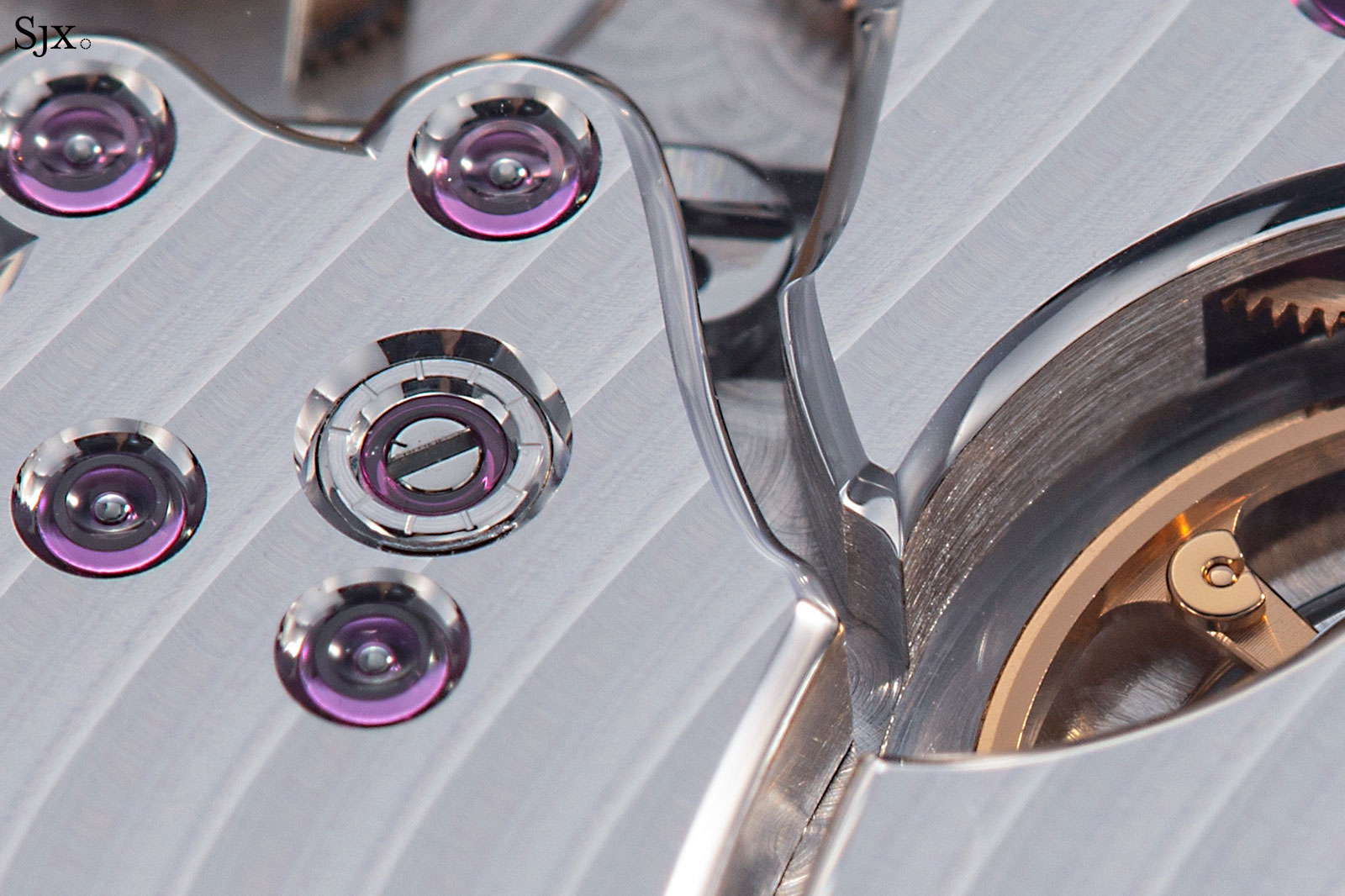
One of the adjustment screws with the graduated collet around it
Though not user-adjustable, the mechanism of the Anywhere is significantly simpler than the complicated set-up employed in the Everywhere, which allows the wearer to make adjustments via a complex “tower” of gears consisting of two differentials. All of that brought the part count of the Everywhere movement to 595.
Despite the simplifications, the Anywhere movement still boasts an impressive 432 parts. A good number of that is down to the large number of jewels used for the levers and racks, and the intricate construction of the eccentric cam.
Finishing
The simplified movement in the Anywhere allows for more visual expression in terms of decoration. And the opportunity has been used well, with decoration that is done very, very well.
To start with, the movement is hand-wound, freeing up a good amount of real estate for finishing. And in the manner of The Da Vinci Code, Mr Maillat has incorporated hidden meaning into the decorative patterns.
The jagged outline of the barrel bridge is an approximation of a section of shore of Lake Neuchâtel, while the wave-shaped Cotes de Geneve reproduces a graph of sunrise times in Neuchâtel over the year. While I appreciate the reference to Neuchâtel, a town very much steeped in the history of watchmaking and Krayon’s home, both decorative elements look odd to my eye.
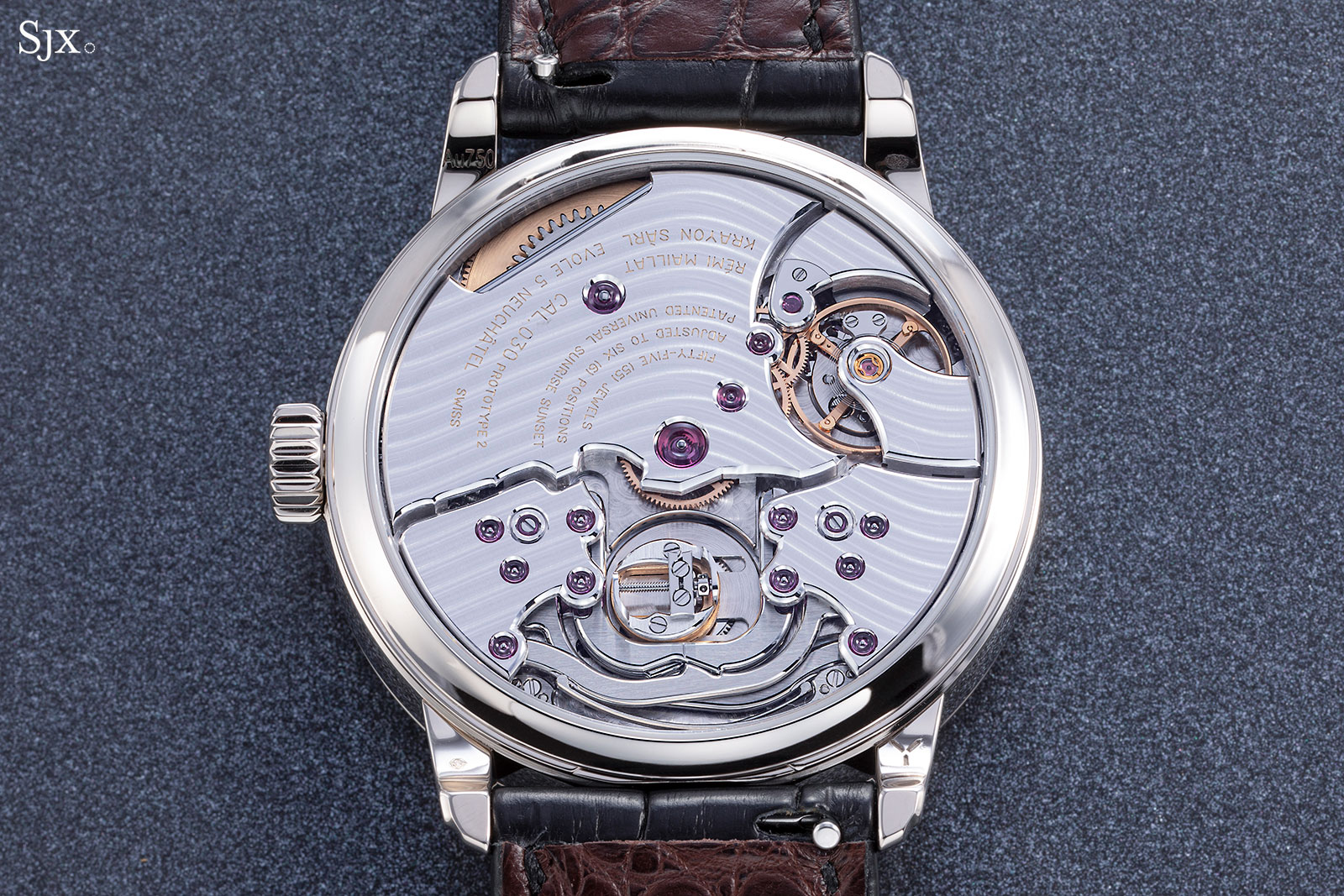
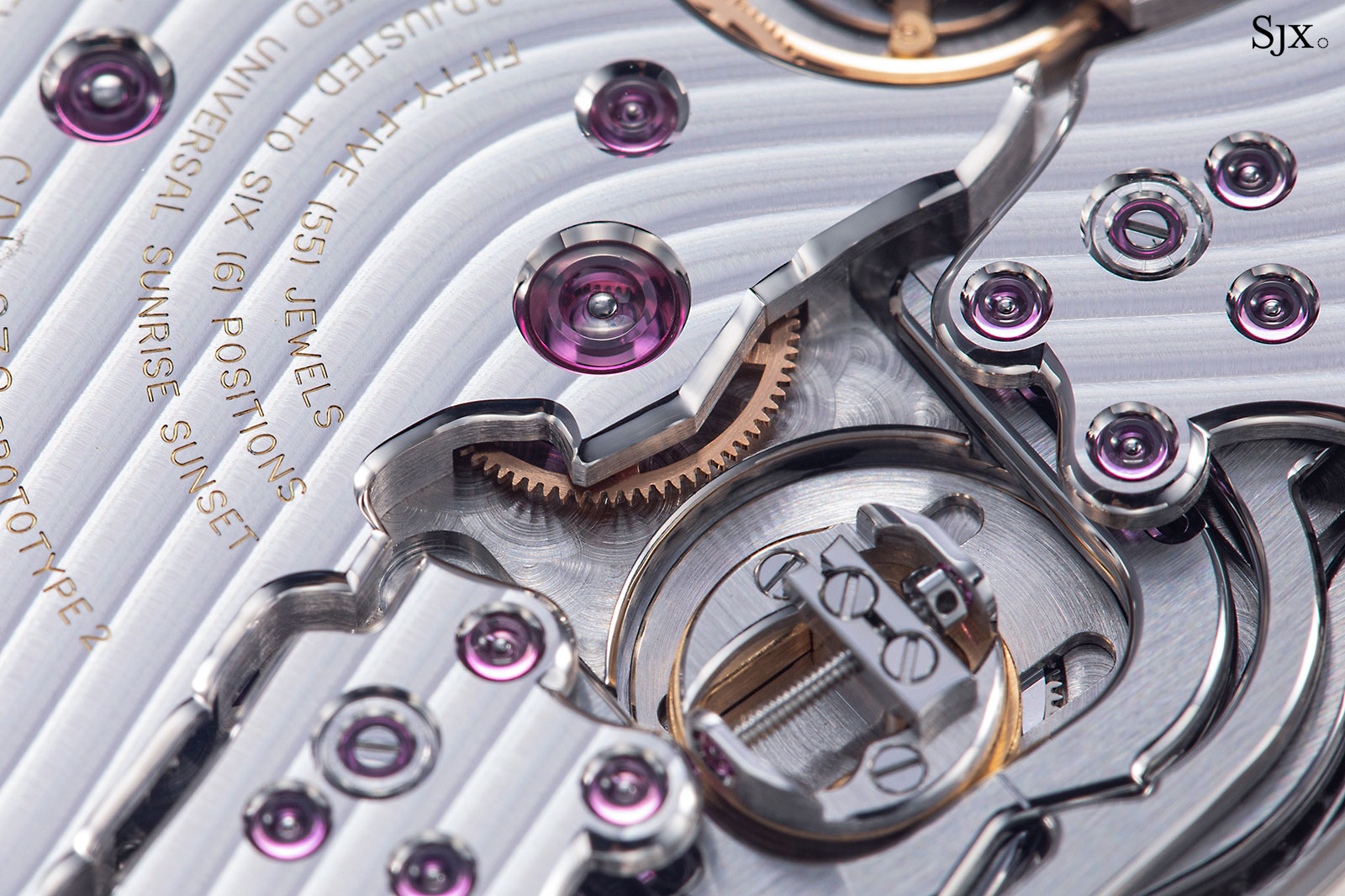
Lakeshore outline in anglage
But the movement still looks good, because the finishing is done to an extremely high standard. The anglage, for instance, is generously wide, rounded and plentiful, while also included numerous sharply angled inward and outward angles. The same can be said for the bowl-shaped countersinks for the jewels and screws. Even the teeth of the barrel ratchet wheel are neatly mirror polished.
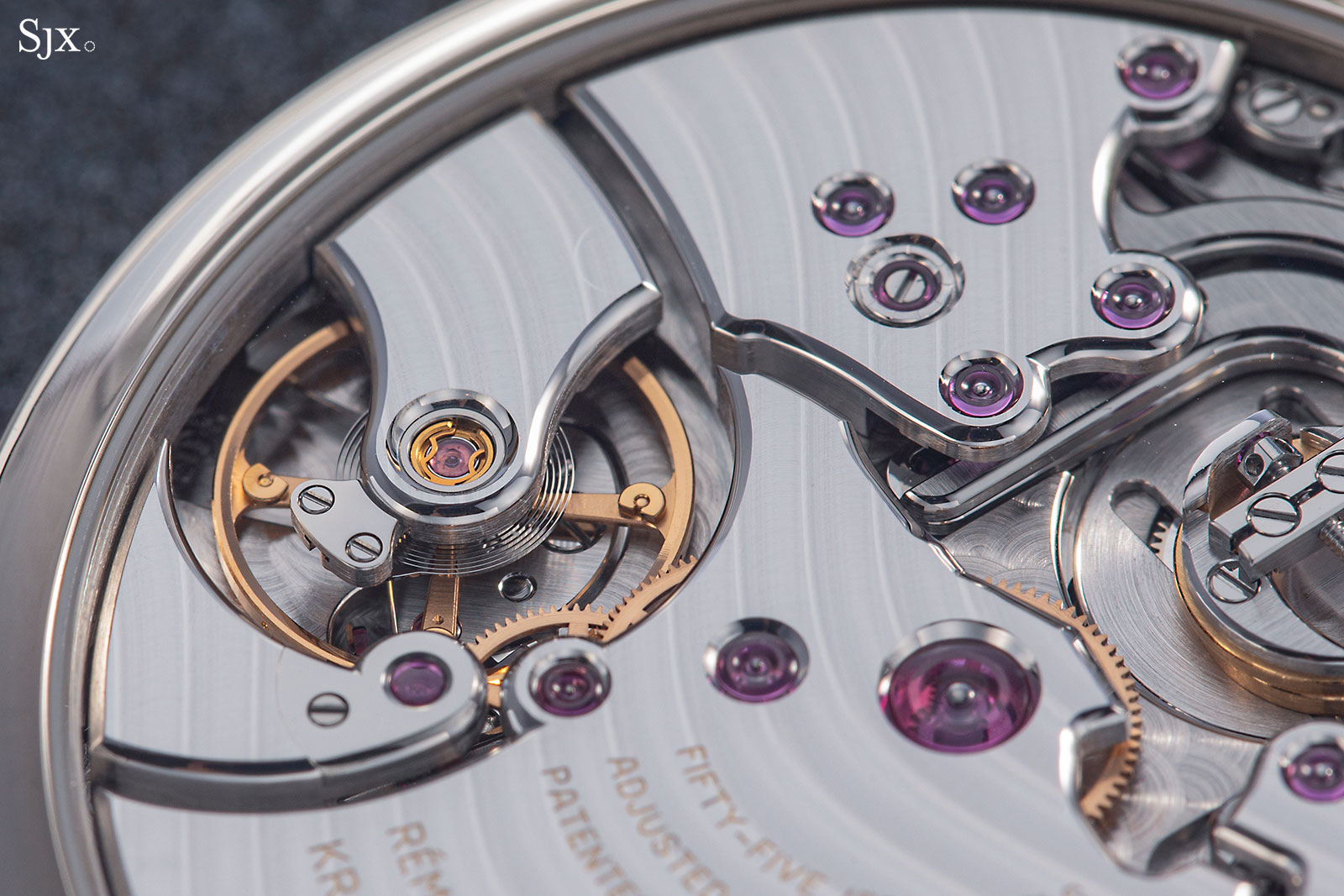
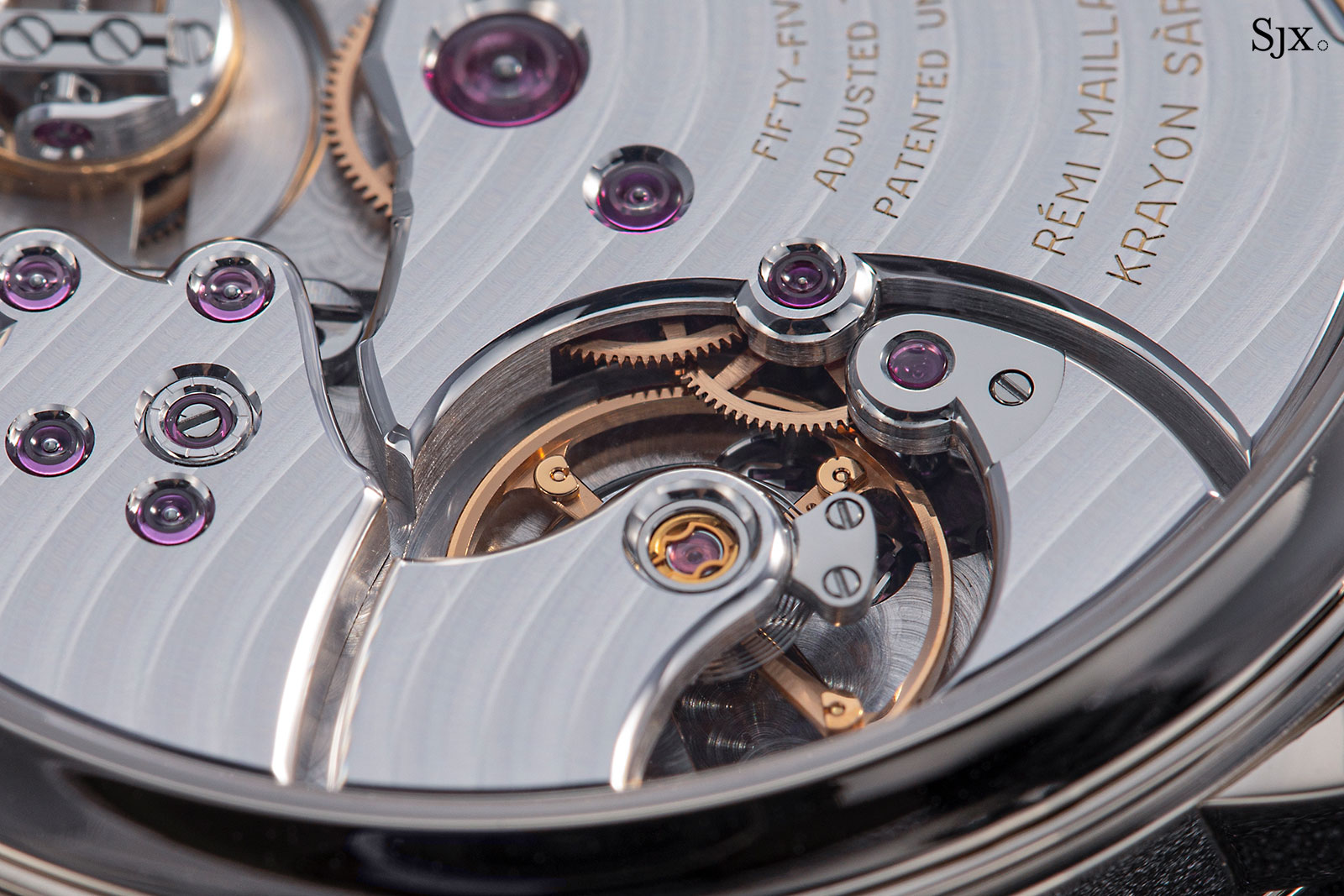
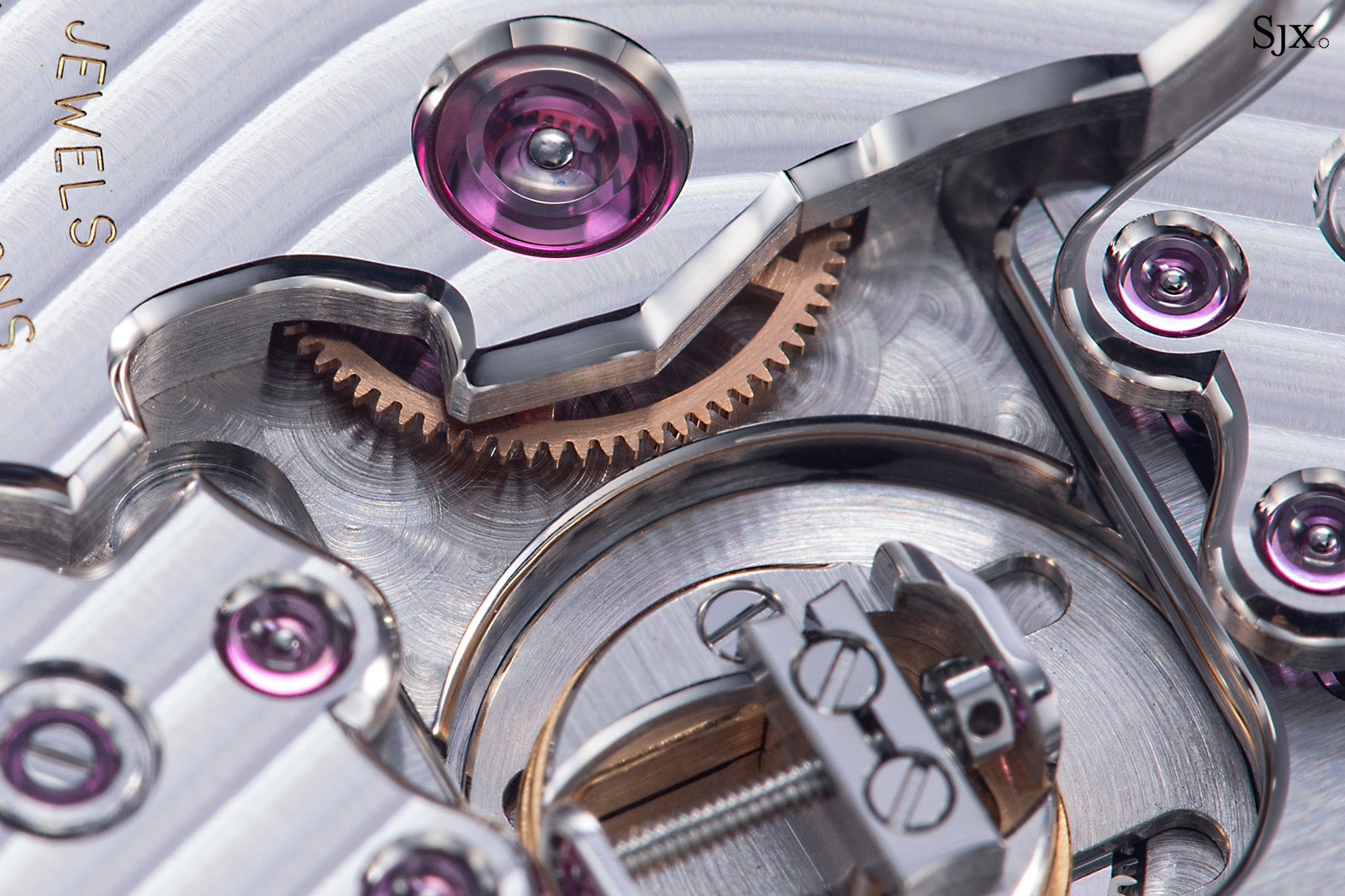
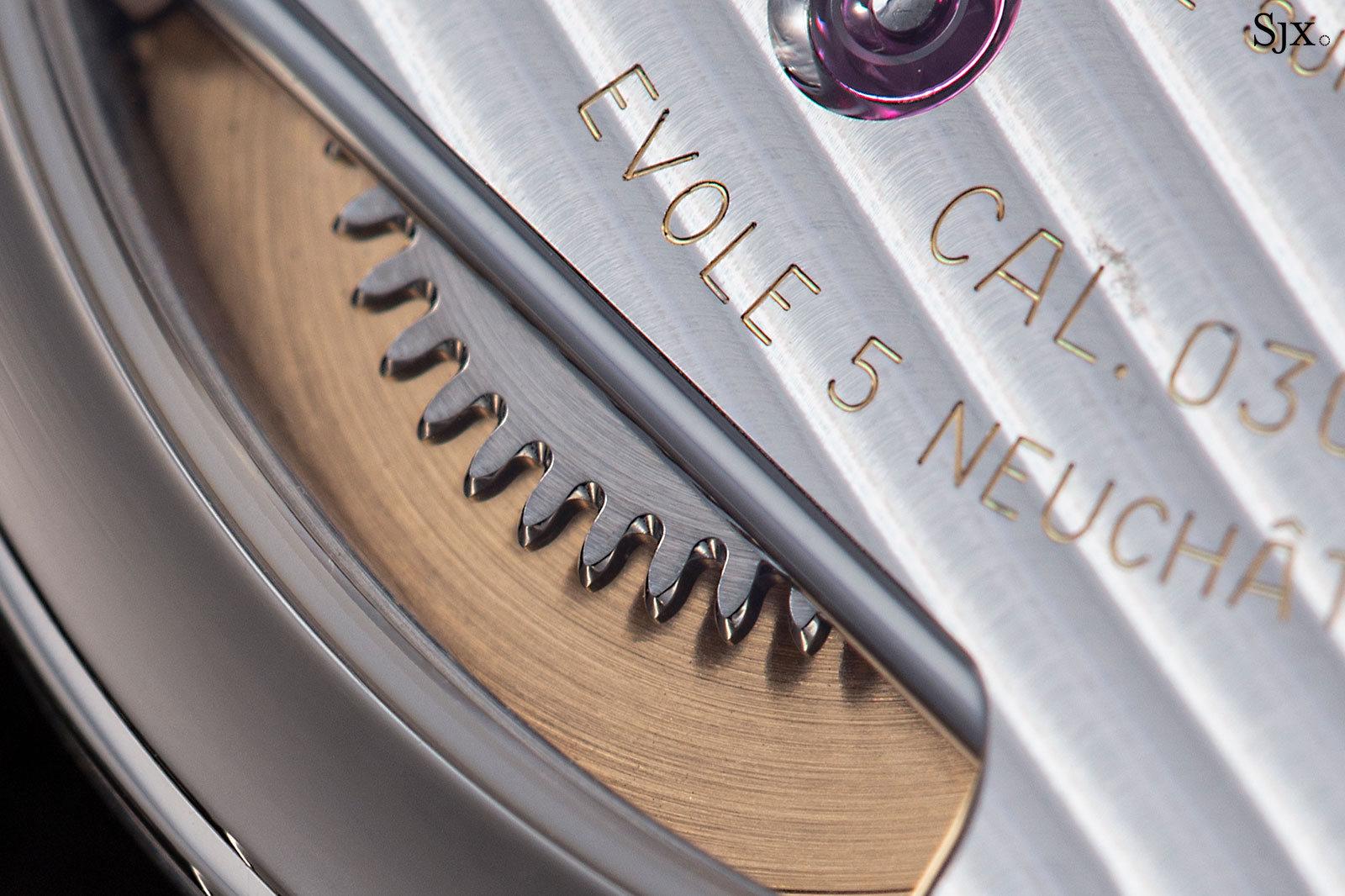
Polished teeth on the barrel ratchet wheel
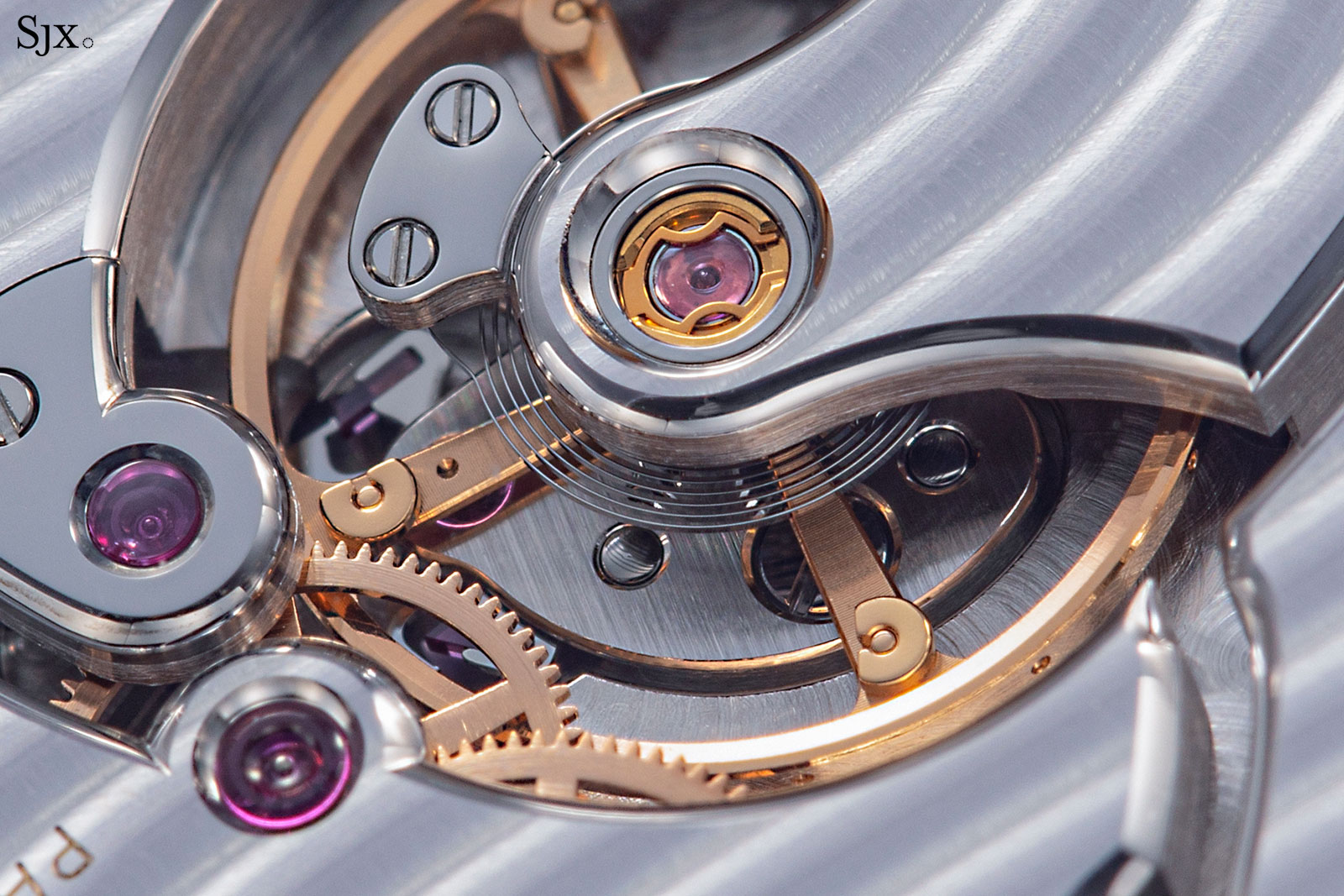
The crucial sunrise and sunset mechanism is given appropriate treatment. The cam is strikingly shaped and finished, with anglage on its outer edges and a combination of polished and brushed surface on its top. Similarly, the racks are straight grained on top, with wide, polished bevels on the edges that include sharp, outward corners.
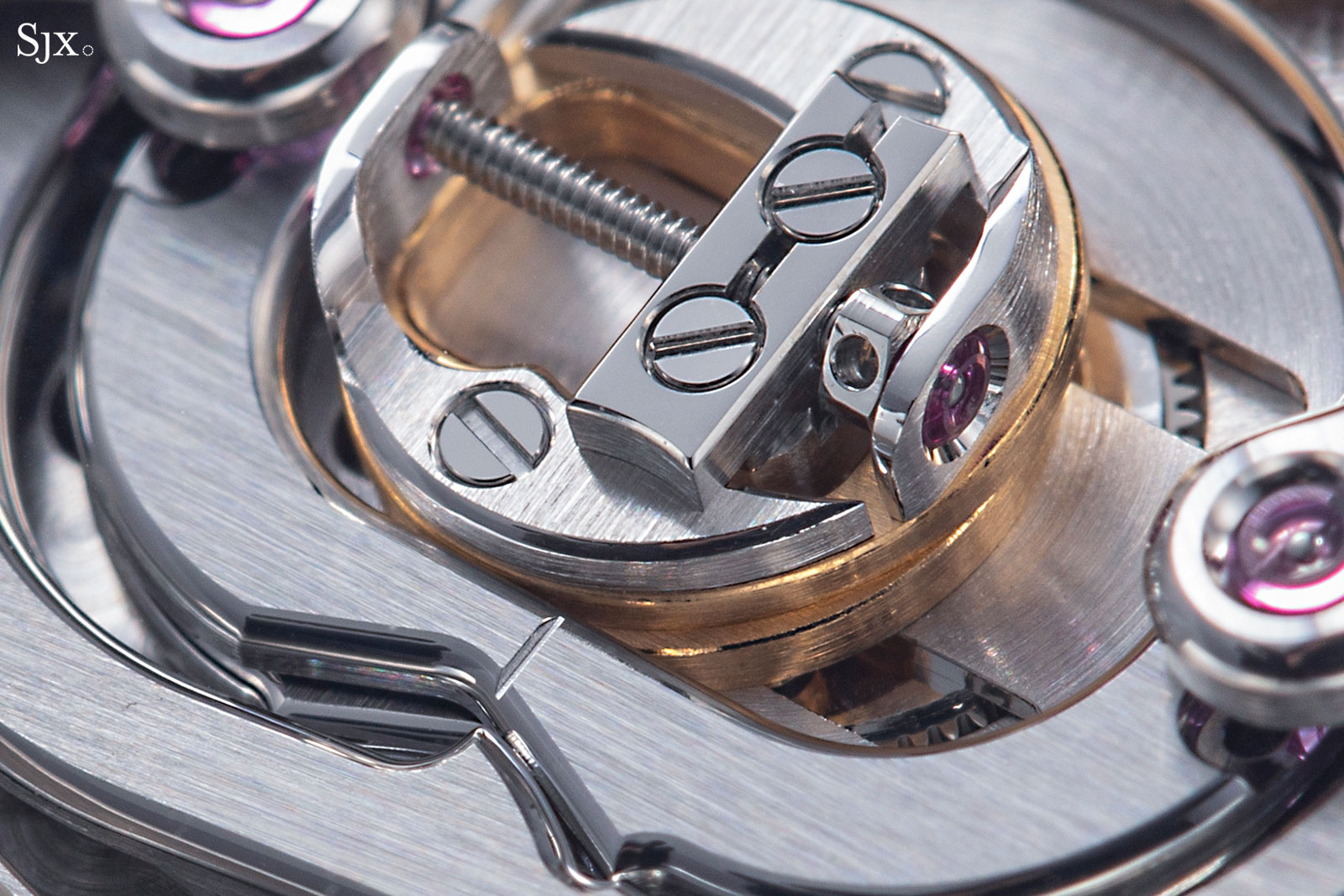
The movement also features lots of classical detail, including the black-polished, ratchet-style winding click, the kidney-shaped Geneva-style stud carrier on the balance cock, and the black-polished cap for the escape wheel jewel.
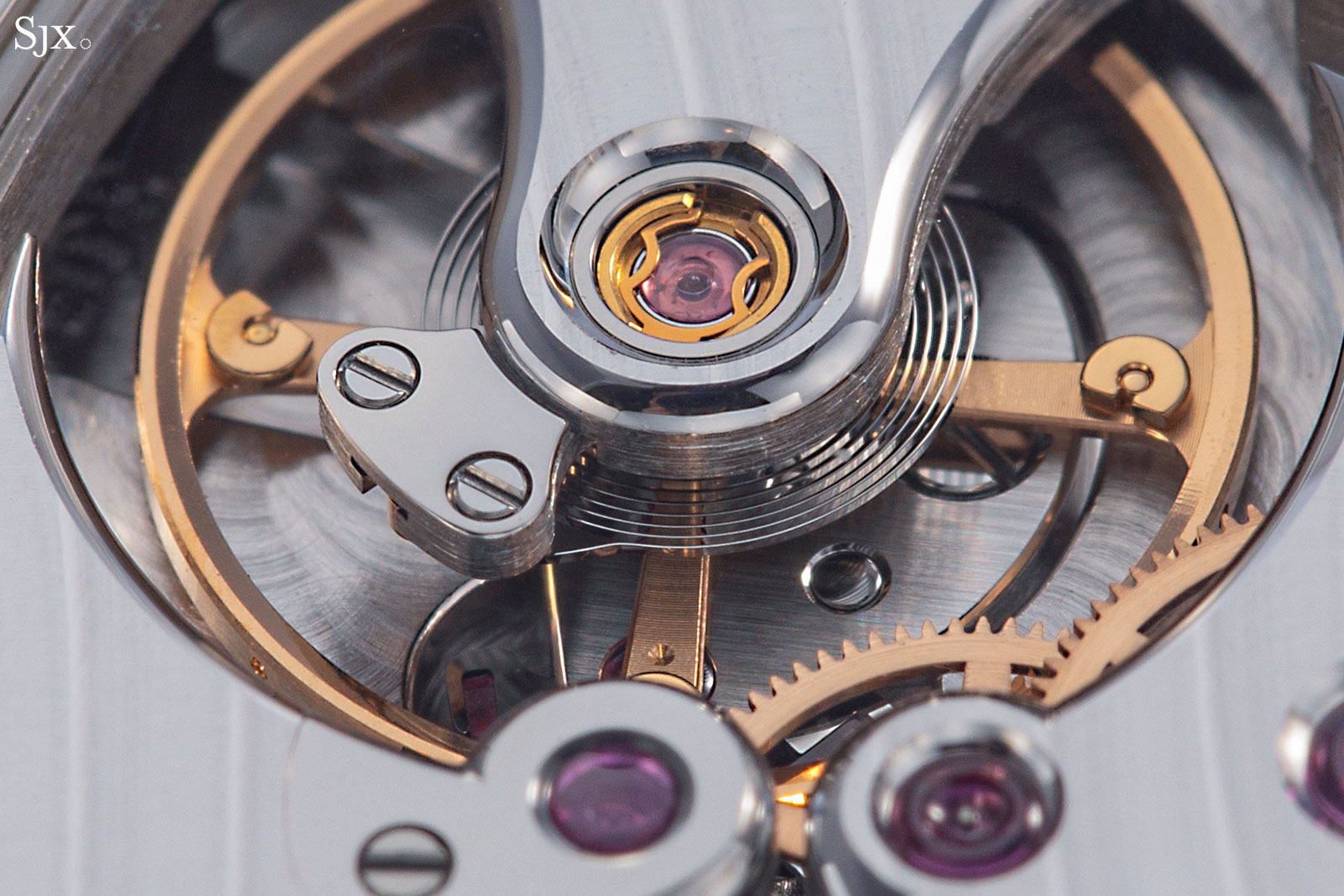
The Geneve-style stud carrier, albeit with a flat hairspring
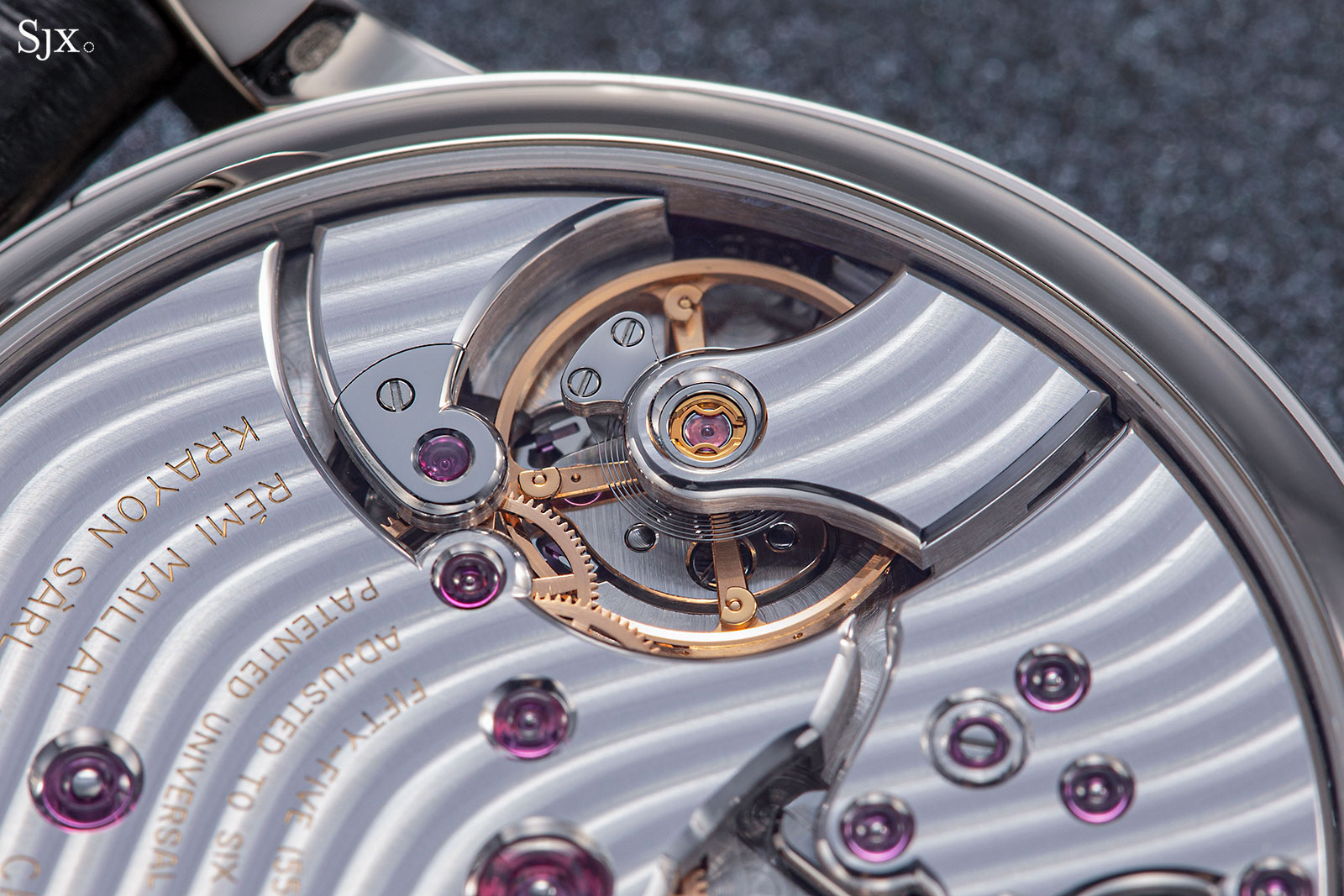
The black-polished steel cap next to the balance wheel
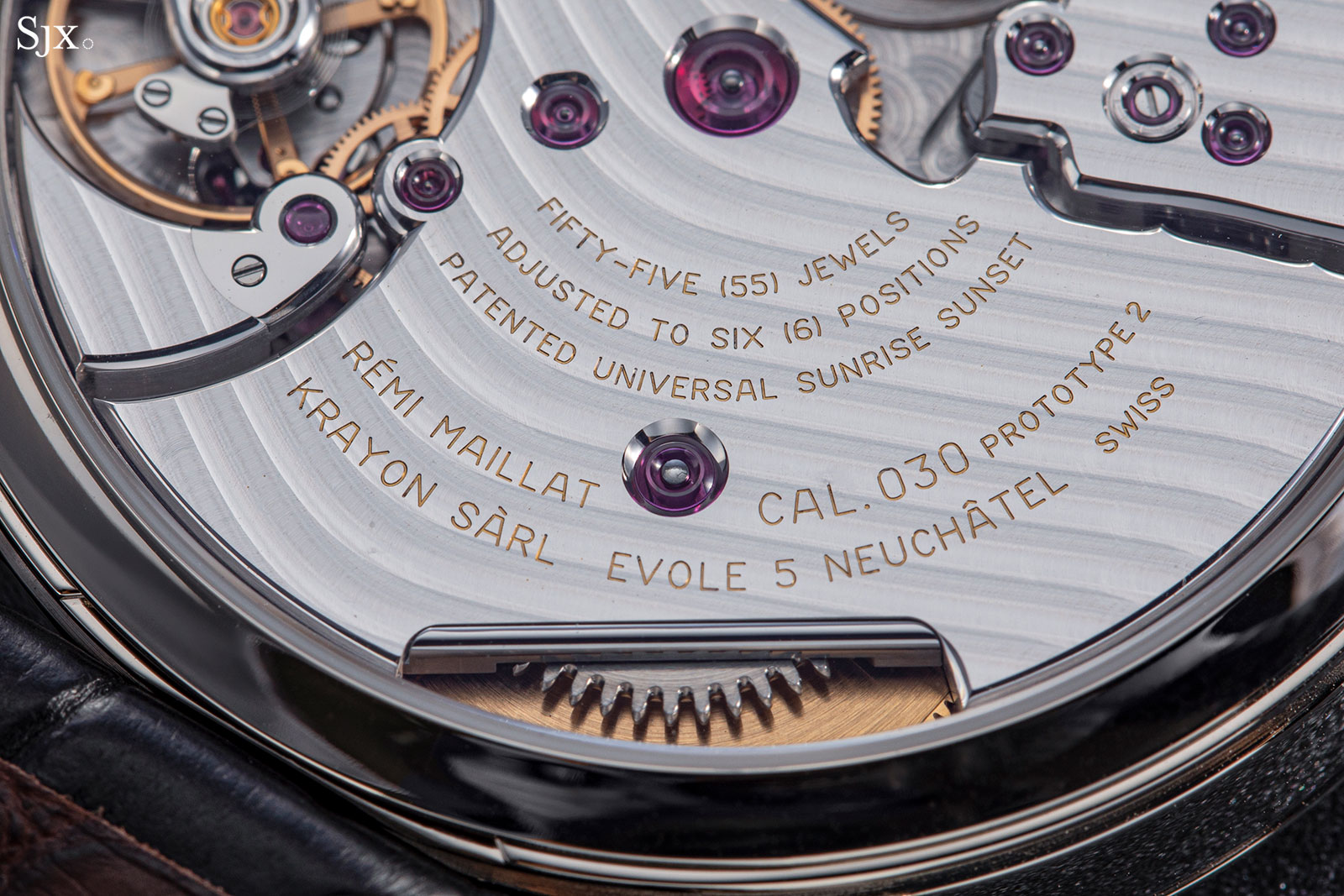
The black-polished winding click
A handful of elements are missing, however, in part because this is a prototype movement. For instance, the visible wheels of the going train lack chamfered spokes and inner edges. And the fit between steel cap and the escape wheel cock isn’t exactly seamless.
Concluding thoughts
Watches equipped with esoteric, highly-complicated functions are often confusing and large. The Anywhere manages to be the opposite. It’s handsome, wearable and easy to use. Though I would change some elements of the dial design, like the shape of the hour markers, generally the design works well.
And just as important is the movement finishing, which is excellent. That makes the Anywhere unusual, because watches with such complications aren’t unusual highly finished, and highly-finished watches are typically time-only or tourbillons.
Priced at 96,000 Swiss francs in steel, the Anywhere is a smartly constructed and finely finished, and reasonably priced.
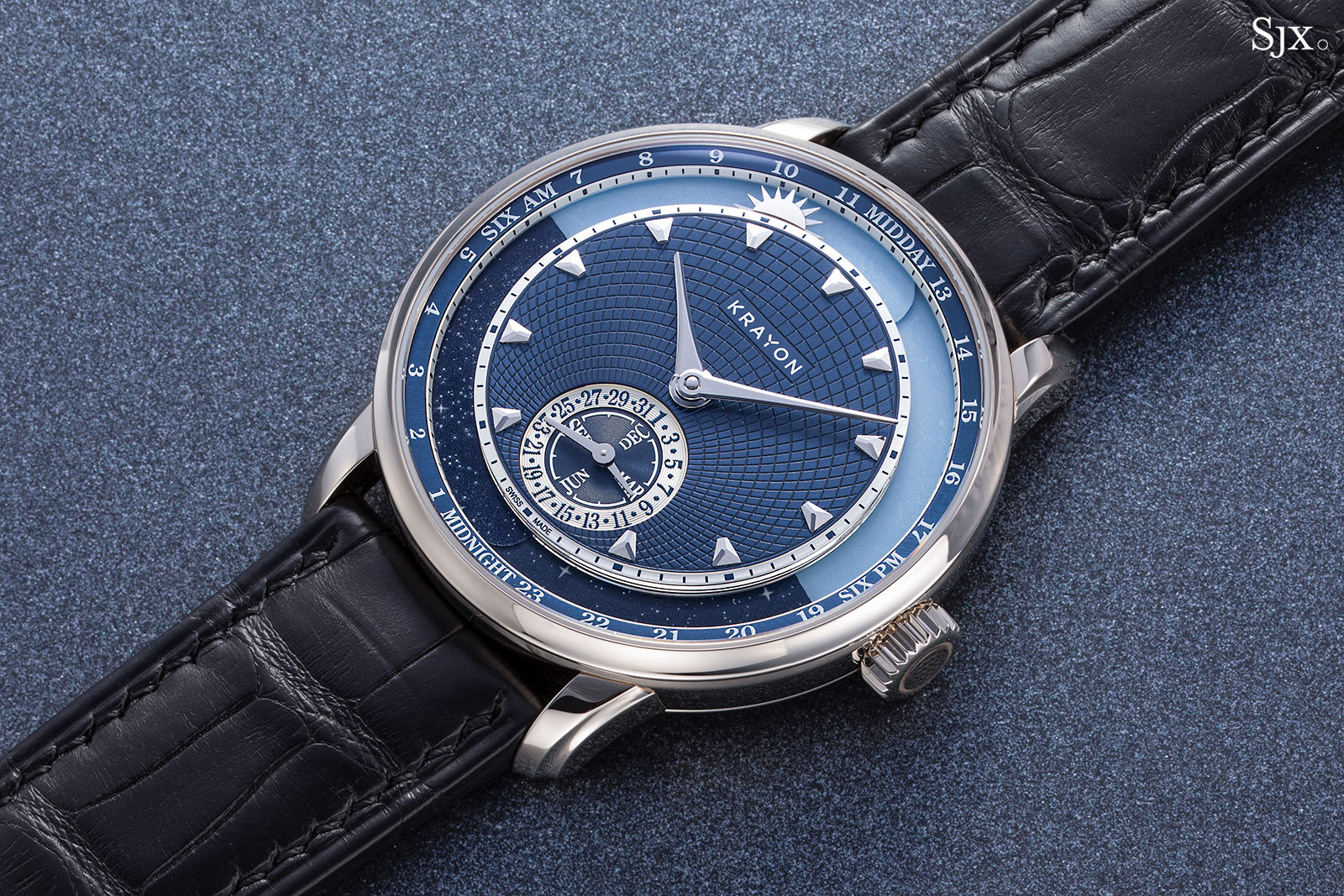
Key Facts and Price
Krayon Anywhere
Ref. C030-10 (white gold)
Ref. C030-20 (rose gold)
Diameter: 39 mm
Height: 9.5 mm
Material: Steel, rose gold, or white gold
Crystal: Sapphire
Water-resistance: 30m
Movement: Cal. C030
Functions: Hour, minutes, sunrise and sunset times, 24-hour indicator, and calendar with month
Components: 432
Winding: Hand-wound
Frequency: 21,600 beats per hour (3 Hz)
Power reserve: 86 hours
Strap: Alligator leather
Availability: Direct from Krayon
Price: 96,000 Swiss francs in steel; 116,000 Swiss francs in gold
For more, visit Krayon.ch.
Back to top.

